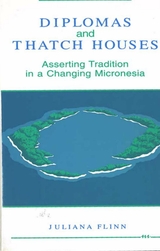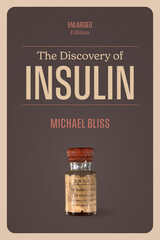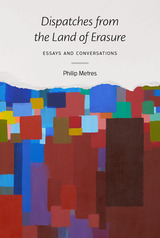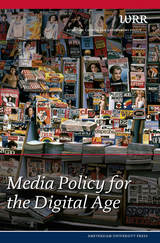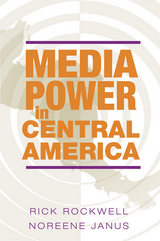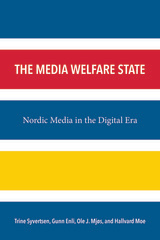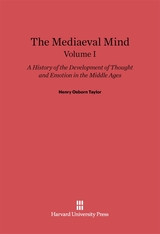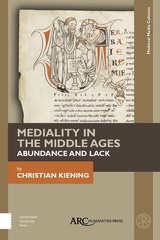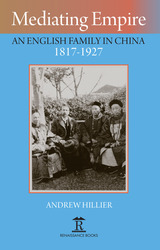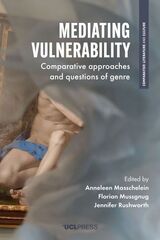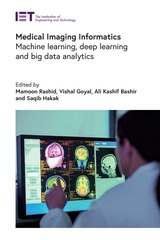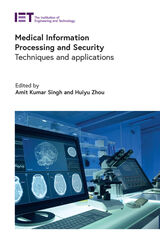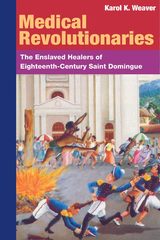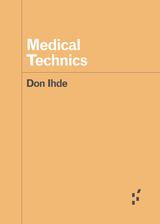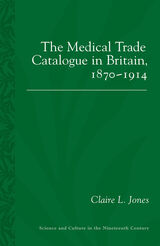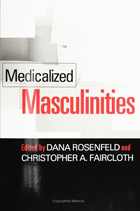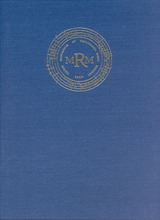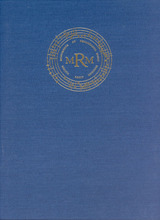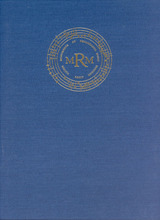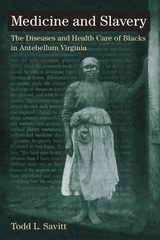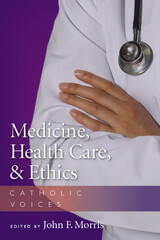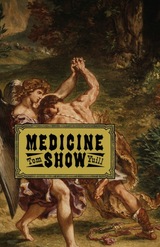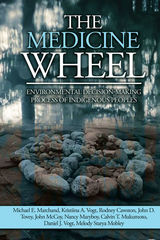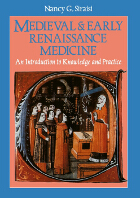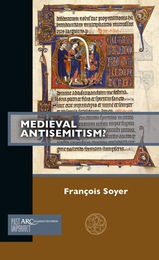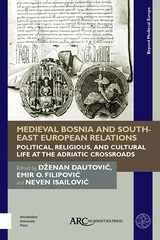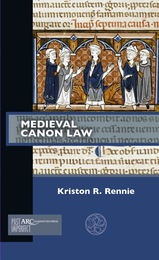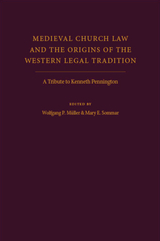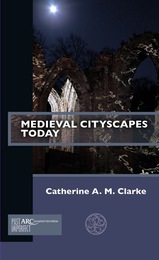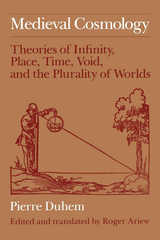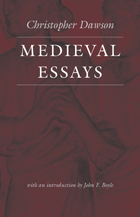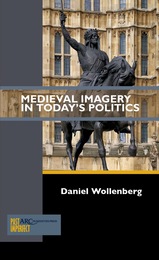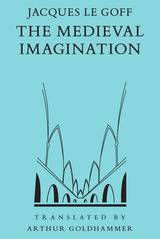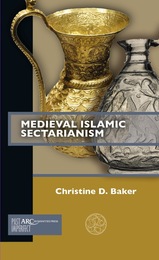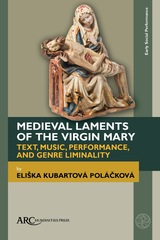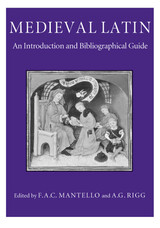 Media Marathon: A Twentieth-Century Memoir
Erik Barnouw
Duke University Press, 1996 One of the most respected and honored historians of the media, Erik Barnouw has been called a major national resource by The Nation. Norman Corwin dubbed him America’s Gibbon. He is the writer, says critic John Leonard, “from whom the rest of us steal instead of doing our research.” Media history is his subject, and, as this memoir makes so delightfully clear, it has also been Erik Barnouw’s life. Barnouw’s story, told with wit and charm in Media Marathon, is the story of American culture adjusting to the twentieth century, of new media repeatedly displacing the old in a century-long competitive upheaval.
Born in Holland in 1908 and an immigrant to the United States at the age of eleven, Barnouw spent his early working years in an astounding array of occupations—actor and stage manager, lyricist, translator, director, producer, teacher, and union official. This varied background, described here in rich detail, informs his writings about the world in which he moved, specifically regarding the shifting channels of twentieth-century mass communication. Telling his story through a series of personal profiles of the famous, the infamous, and the little known but powerfully influential, Barnouw recounts the events that took him from the vaudeville stage to the Library of Congress, where he became the first chief of its newly formed Motion Picture, Broadcasting, and Recording Sound Division. Thornton Wilder, Pearl S. Buck, Joshua Logan, Dwight Eisenhower, Lynn Fontanne, Tallulah Bankhead, and Akira Iwasaki—these are among the featured characters in the drama of American media, rendered here in striking close-ups.
From The Hague to retirement in Vermont, with stops in India, Japan, and Russia, Barnouw’s remarkable story gives readers the chance to relive crucial chapters of modern media history—and to relive them with one of that history’s masters as an incomparable guide. A book for those interested in the “mass media,” its evolution, and role in society, Media Marathon will appeal to students, scholars, and general readers alike.
 Media, Market, and Democracy in China: Between the Party Line and the Bottom Line
Yuezhi Zhao
University of Illinois Press, 1998 How do market forces influence the media in China? How does the Party both introduce and try to contain the market's influence? How do commercial imperatives both accommodate and challenge Party control? Yuezhi Zhao interviewed a wide range of scholars, media administrators, and media professionals to answer these and other questions. Working in China in 1994 and 1995, she monitored media content, carried out extensive documentary research in Beijing, and held off-the-record meetings with Chinese media insiders. What she found informs an in-depth look at the intertwining nature of the Communist Party and the news media in China, how they affect each other, and what the future might hold for each. A rare on-the-ground portrait, Media, Market, and Democracy in China is must reading for scholars, media and business professionals, and policymakers who need to understand what happened to China and its mass media during a period of dynamic growth and change.
Media, Markets and Public Spheres: European Media at the Crossroads
Edited by Jostein Gripsrud and Lennart Weibull
Intellect Books, 2010 Using a sample of European newspapers and their TV listings as a stepping stone, Media, Markets and Public Spheres presents an overview of changes in European public spheres over the last fifty years. With in-depth analyses of structural changes in press and broadcasting, changing relations between media, and changes in media policies, this book explores how and why the media decisively influence most aspects of society. Media, Markets and Public Spheres will be useful to students in media and communication studies and European studies, as well as for those studying sociology and political science.
Media Materialities: Form, Format, and Ephemeral Meaning
Edited by Iain A. Taylor and Oliver Carter
Intellect Books, 2025 An analysis of the interrelationship between media forms, format, and meaning.
Media Materialities brings together a team of scholars to analyze the increasingly complex relationships between media forms and formats, materiality, and meaning. Deploying a number of different qualitative methodologies, the contributors address three overarching concepts: form, format, and ephemeral meaning. They investigate a range of media artifacts, such as 8mm film, board game maps, videogames, cassette tapes, transistor radios, and Twitter. Their goal is to create spaces for conversation and debate about the implications that this plurality of material meanings might have for the study of media, culture, and society.
Media, Monarchy and Power
Neil Blain and Hugh O'Donnell
Intellect Books, 2013 Is obsession with the Royal Family in Britain a fact of culture or an illusion of media culture? What interest do the European media display in their royal families? Does twenty-first century monarchy remain a political and ideological force - or is it just an economic commodity? Media, Monarchy and Power provides a radical insight into the cultural and political functioning of royalty in five countries. Blain and O'Donnell examine the bonds between monarchies and their 'subjects' or 'citizens', and the relationships between royal families, the media, and nation-states. Numerous case-studies from press and television in Europe and the UK support a theoretical account of the operation of monarchy and royalty in the media. Central to the concerns of Media, Monarchy and Power are the complex relationship between Britain and Europe and the limits of British political modernization.
Media, Nationalism and European Identities
Karol Jakubowicz
Central European University Press, 2011 Explores patterns of interaction between the mass media and identity formation in the context of Europeanization. On the one hand, the major contribution of the volume is a comprehensive framework that considers media impacts on four levels of identity: European, regional, national, and ethnic minority identities. On the other hand, authors offer cutting edge analysis of the structural transformation of European media institutions, and policies that shape the future of European media.
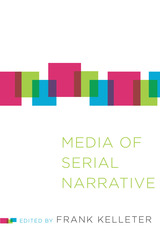 Media of Serial Narrative
Frank Kelleter
Ohio State University Press, 2017 Media of Serial Narrative, edited by Frank Kelleter, is the first book-length study to address the increasingly popular topic of serial narratives—specifically, how practices and forms of seriality shape media throughout the landscape of popular culture. In modern entertainment formats, seriality and popularity can seem so obviously connected that scholarship has long neglected to address their specific interrelations. This volume looks closely at the relationship between seriality, popularity, media, and narrative form and asks: What are the structural conditions of serial stories? Which historical circumstances are presupposed or supported by series and serials? How do commercial types of seriality differ from serial structures in other cultural fields?
Media of Serial Narrative focuses on key sites and technologies of popular seriality since the mid-nineteenth century and up to today: newspapers, comics, cinema, television, and digital communication. Paying close attention to the affordances of individual media, as well as to their historical interactions, the fourteen chapters survey the forms, processes, and functions of popular serial storytelling. With individual chapters by Frank Kelleter, Jared Gardner, Daniel Stein, Christina Meyer, Scott Higgins, Shane Denson, Ruth Mayer, Kathleen Loock, Constantine Verevis, Jason Mittell, Sudeep Dasgupta, Sean O’Sullivan, Henry Jenkins, Christine Hämmerling, Mirjam Nast, and Andreas Sudmann, Media of Serial Narrative is an exciting and broad-ranging intervention in the fields of seriality, media, and narrative studies.
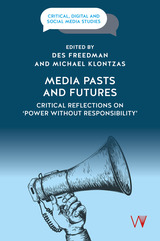 Media Pasts and Futures: Critical Reflections on 'Power Without Responsibility'
Edited by Des Freedman and Michael Klontzas
University of Westminster Press, 2025 This collection of short essays from leading media scholars reflects on critical issues of media history, power, ownership, influence and impact. The book uses the acclaimed media title Power Without Responsibility (PWR) as a calling card, a cue to reflect on the limitations of the media in different countries and to advocate solutions aimed at stimulating more democratic forms of communications.Organised in five sections, contributions in this book identify the relevance of PWR and then pick out and develop its core themes. The first section provides both a reminder of PWR’s significance to media history and analysis and then explores its conclusions in relation to media systems in places including Europe, South and East Asia, Africa and Latin America. The second section takes up the argument that ‘market censorship’ impoverishes the media while the third explores the book’s lessons for contemporary media reform. The fourth section explores the contribution of public service broadcasting and its relevance for future communications systems. The fifth section considers PWR’s analysis of radical journalism in relation to both historical and contemporary initiatives while the concluding section features two original essays by the authors of PWR, James Curran and Jean Seaton, reflecting on their book 43 years and nine editions after it was first published.
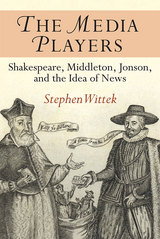 The Media Players: Shakespeare, Middleton, Jonson, and the Idea of News
Stephen Wittek
University of Michigan Press, 2015 The Media Players: Shakespeare, Middleton, Jonson, and the Idea of News builds a case for the central, formative function of Shakespeare’s theater in the news culture of early modern England. In an analysis that combines historical research with recent developments in public sphere theory, Dr. Stephen Wittek argues that the unique discursive space created by commercial theater helped to foster the conceptual framework that made news possible. Dr. Wittek’s analysis focuses on the years between 1590 and 1630, an era of extraordinary advances in English news culture that begins with the first instance of serialized news in England and ends with the emergence of news as a regular, permanent fixture of the marketplace. Notably, this period of expansion in news culture coincided with a correspondingly extraordinary era of theatrical production and innovation, an era that marks the beginning of commercial theater in London, and has left us with the plays of William Shakespeare, Ben Jonson, and Thomas Middleton.
 Media Pluralism and Online News: The Consequences of Automated Curation for Society
Tim Dwyer and Derek Wilding
Intellect Books, 2023 An exploration of the future of media pluralism policies for online news.
In the transition to a media landscape increasingly dominated by broadband internet distribution and the dominance of US-centric new media behemoths Google, Facebook, Apple, Amazon, and Netflix, Media Pluralism and Online News investigates measures that can be taken to reduce this ongoing march of concentration and the attenuation of media voices. The authors argue that there is an urgent need for revitalized thinking for a media policy agenda to deal with the trend of concentrated media power, which is an ongoing global risk to public interest journalism. Securing the public interest in a vibrant and sustainable news media sector will require that merger decisions assess whether there is a reduction in diversity, calling for a new public interest test and a more expansive policy focus than in the past.
Media Poetry: An International Anthology
Edited by Eduardo Kac
Intellect Books, 2007 Today's innovative poets no longer express their dissenting voice on the printed page but in the experimental realm of contemporary media, where holograms, video projections, and even biotechnology form the basis of a new syntax. Celebrated poet and artist Eduardo Kac's Media Poetry is the first anthology to document this radically new form, which is taking language beyond the confines of verse and into the non-linear world of digital interactivity and hyperlinkage. This unparalleled volume takes up all the exhilarating incarnations of media poetry, from real-time text generation and spatiotemporal discontinuities to immateriality and visual tempo, exploring the international group of revolutionary poets responsible for such innovations. By embracing the vast possibilities made available by new media, the artists featured in this anthology have become the poetic pioneers of the next millennium.
Media Policy for the Digital Age
The Netherlands Scientific Council for Government Policy
Amsterdam University Press, 2006 Traditionally, the Netherlands has enjoyed status as a test market for new media. But in the past decade, such innovations have been severely hampered by questions about the future of public broadcasting. This issue has led to abundant political grandstanding, but little in the way of definitive policymaking. In February 2005, the Scientific Council for Government Policy published a report with practical policy suggestions. Media Policy for the Digital Age summarizes the Council’s recommendations, giving readers outside the Netherlands insight into the issues at stake and possible solutions, as well as a concise analysis that tackles the challenges of making robust media policy for the twenty-first century.
Media Power in Central America
Rick Rockwell and Noreene Janus
University of Illinois Press, 2003 Media Power in Central America explores the political and cultural interplay between the media and those in power in Costa Rica, El Salvador, Guatemala, Honduras, Panama, and Nicaragua. Highlighting the subtle strangulation of opposition media voices in the region, the authors show how the years since the guerrilla wars have not yielded the free media systems that some had expected. Rick Rockwell and Noreene Janus examine the region country by country and deal with the specific conditions of government-sponsored media repression, economic censorship, corruption, and consumer trends that shape the political landscape. Challenging the notion of the media as a democratizing force, Media Power in Central America shows how governments use the media to block democratic reforms and outlines the difficulties of playing watchdog to rulers who use the media as a tool of power.
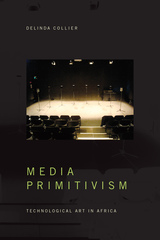 Media Primitivism: Technological Art in Africa
Delinda Collier
Duke University Press, 2020 In Media Primitivism Delinda Collier provides a sweeping new understanding of technological media in African art, rethinking the assumptions that have conceptualized African art as unmediated, primary, and natural. Collier responds to these preoccupations by exploring African artworks that challenge these narratives. From one of the first works of electronic music, Halim El-Dabh’s Ta’abir Al-Zaar (1944), and Souleymane Cissé's 1987 film, Yeelen, to contemporary digital art, Collier argues that African media must be understood in relation to other modes of transfer and transmutation that have significant colonial and postcolonial histories, such as extractive mining and electricity. Collier reorients modern African art within a larger constellation of philosophies of aesthetics and technology, demonstrating how pivotal artworks transcend the distinctions between the constructed and the elemental, thereby expanding ideas about mediation and about what African art can do.
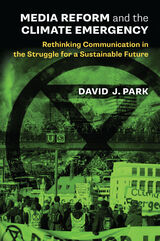 Media Reform and the Climate Emergency: Rethinking Communication in the Struggle for a Sustainable Future
David J. Park
University of Michigan Press, 2021 Award-winning author David J. Park argues that the battle against global warming is also a fight for media reform. With his new book Media Reform and the Climate Emergency: Rethinking Communication in the Struggle for a Sustainable Future, he critically examines how advertising, the digital infrastructure, and journalism advance the climate emergency and lays out a path of reform to help create a more sustainable world. The production and consumption of goods and services within consumer societies lead to unsustainable greenhouse gas emissions, and Park finds that much of mass communication is either dependent upon or closely tied to the success of this social organization. As a result, he suggests successful environmental movements creatively dismantle or reform institutional infrastructures that extend the planetary global warming crisis and the unsustainable consumption of nature.
Communication policies and industries are part of these infrastructures. Advertising evolved to propel a new consumer society that would encourage the over-consumption of goods and services with harmful and unsustainable production processes. Our digital infrastructure is largely premised upon the surveillance of online consumer habits and preferences, with the goal to create individualized messages to more effectively persuade people to increase their consumption habits. Much of commercial journalism resists the drastic and immediate regulatory changes necessary to address the worst aspects of this crisis. This is because so many of the needed changes challenge the media’s source of income, their libertarian philosophy, and the general status quo, which is preferred by elites. Bound to foster conversations among scholars, activists, politicians, and those who work in the communication industries, this book rethinks mass communication and highlights how immediate reform is needed in the struggle for a sustainable planet.
Media Rurality
Patrick Brodie and Darin Barney, editors
Duke University Press, 2026 Media Rurality investigates the centrality of rural places and people within the media systems and technologies that shape daily life in and across rural and urban settings alike. From the boglands of Ireland to data centers in the Oregon countryside to the homemade media systems of rural Tanzania, the contributors to this volume show how rural territories are highly mediated, technologized spaces profoundly enmeshed with global capitalism and colonialism. Approaching the study of rurality through a materialist lens that foregrounds infrastructure, this collection shows how rural spaces often bear the environmental brunt of capitalist development while being relegated to the economic and cultural periphery.
Media Sense: The Folklore-Popular Culture Continuum
Smith
University of Wisconsin Press Essays in this collection exemplify folkloristic approaches to popular culture. The contributors are concerned with the ways in which technological media shape expressive forms; the small group uses of mass media; the relation of traditional forms, content and aesthetics to mass popularity; the changing repertoires and roles of active bearers of tradition who perform for audiences of differing sizes; and the functions of folklore within the conventions of popular culture. This collection demonstrates that folklore and popular culture are not oppositional so much as interdependent categories of cultural activity in modern society.
 Media, Sound, and Culture in Latin America and the Caribbean
Alejandra Bronfman
University of Pittsburgh Press, 2012
Outside of music, the importance of sound and listening have been greatly overlooked in Latin American history. Visual media has dominated cultural studies, affording an incomplete record of the modern era. This edited volume presents an original analysis of the role of sound in Latin American and Caribbean societies, from the late nineteenth century to the present. The contributors examine the importance of sound in the purveyance of power, gender roles, race, community, religion, and populism. They also demonstrate how sound is essential to the formation of citizenship and nationalism.
Sonic media, and radio in particular, have become primary tools for contesting political issues. In that vein, the contributors view the control of radio transmission and those who manipulate its content for political gain. Conversely, they show how, in neoliberal climates, radio programs have exposed corruption and provided a voice for activism.
The essays address sonic production in a variety of media: radio; Internet; digital recordings; phonographs; speeches; carnival performances; fireworks festivals, and the reinterpretation of sound in literature. They examine the bodily experience of sound, and its importance to memory coding and identity formation.
This volume looks to sonic media as an essential vehicle for transmitting ideologies, imagined communities, and culture. As the contributors discern, modern technology has made sound ubiquitous, and its study is therefore crucial to understanding the flow of information and influence in Latin America and globally.
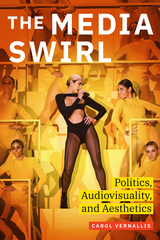 The Media Swirl: Politics, Audiovisuality, and Aesthetics
Carol Vernallis
Duke University Press, 2023 From fan-generated content on TikTok to music videos, the contemporary media landscape is becoming ever more vast, spectacular, and intense. In The Media Swirl Carol Vernallis examines short-form audiovisual media—Beyoncé’s Lemonade, brief sequences from Baz Luhrmann’s The Great Gatsby, TikTok challenges, YouTube mashups, commercials, and many other examples—to offer ways of understanding digital media. She analyzes music videos by Beyoncé, Lady Gaga, Janelle Monáe, Kendrick Lamar, Anderson .Paak, and others to outline how sound and image enhance each other and shape a viewer’s mood. Responding to today’s political-media landscape through discussions of Fox News and Presidential inaugurations, Vernallis shows how a media literacy that exceeds newscasts and campaign advertising is central to engaging with the democratic commons. Forays into industry studies, neuroscience, and ethics also inform her readings. By creating our own content and knowing what corporations, the wealthy, and the government do through media, Vernallis contends, we can create a more just world.
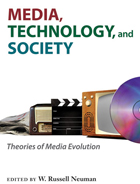 Media, Technology, and Society: Theories of Media Evolution
W. Russell Neuman
University of Michigan Press, 2010 "This book is the perfect primer for understanding media in the digital age. We are in an era when newspaper, radio, and television are fast becoming archeological concepts. Herein are the reasons why."
---Nicholas Negroponte, founder and chairman of One Laptop per Child and cofounder of the MIT Media Laboratory "Congratulations to Neuman and colleagues for a fascinating exploration of how previous new media were constructed, whether things could have been otherwise, and what can be learned for future media."
---Sonia Livingstone, Department of Media and Communications, the London School of Economics and Political Science In Media, Technology, and Society, some of the most prominent figures in media studies explore the issue of media evolution. Focusing on a variety of compelling examples in media history, ranging from the telephone to the television, the radio to the Internet, these essays collectively address a series of notoriously vexing questions about the nature of technological change. Is it possible to make general claims about the conditions that enable or inhibit innovation? Does government regulation tend to protect or thwart incumbent interests? What kinds of concepts are needed to address the relationship between technology and society in a nonreductive and nondeterministic manner? To what extent can media history help us to understand and to influence the future of media in constructive ways? The contributors' historically grounded responses to these questions will be relevant to numerous fields, including history, media and communication studies, management, sociology, and information studies. W. Russell Neuman is John Derby Evans Professor of Media Technology and Research Professor, Center for Political Studies, Institute for Social Research, at the University of Michigan. DIGITALCULTUREBOOKS: a collaborative imprint of the University of Michigan Press and the University of Michigan Library
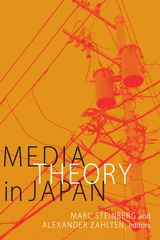 Media Theory in Japan
Marc Steinberg and Alexander Zahlten, editors
Duke University Press, 2017 Providing an overview of Japanese media theory from the 1910s to the present, this volume introduces English-language readers to Japan's rich body of theoretical and conceptual work on media for the first time. The essays address a wide range of topics, including the work of foundational Japanese thinkers; Japanese theories of mediation and the philosophy of media; the connections between early Japanese television and consumer culture; and architecture's intersection with communications theory. Tracing the theoretical frameworks and paradigms that stem from Japan's media ecology, the contributors decenter Eurocentric media theory and demonstrate the value of the Japanese context to reassessing the parameters and definition of media theory itself. Taken together, these interdisciplinary essays expand media theory to encompass philosophy, feminist critique, literary theory, marketing discourse, and art; provide a counterbalance to the persisting universalist impulse of media studies; and emphasize the need to consider media theory situationally. Contributors. Yuriko Furuhata, Aaron Gerow, Mark Hansen, Marilyn Ivy, Takeshi Kadobayashi, Keisuke Kitano, Akihiro Kitada, Thomas Looser, Anne McKnight, Ryoko Misono, Akira Mizuta Lippit, Miryam Sas, Fabian Schäfer, Marc Steinberg, Tomiko Yoda, Alexander Zahlten
 Media Travels: Toward an Atlas of Global Media
Juan Llamas-Rodriguez
Amherst College Press, 2025 Media Travels: Toward An Atlas of Global Media fills a significant gap in global media scholarship by offering short, readable articles covering different types of media from around the world. Through careful and informed analysis, these eleven accessibly written chapters illustrate the particularities of different media practices and situate them within social, historical, and geographical contexts. Examples range from South African video games to Korean TV series popular in Latin America to Indigenous film and media from the US and Canada. Media studies courses, particularly introductory courses, are often narrowly focused on US and Western European canons. Instructors for introductory media studies courses wishing to expand the offerings in their curricula will find in these essays new ways of approaching foundational concepts and issues in the field, including globalization, social difference, and diverse media cultures. Scholars wishing to expand their research into specific media forms or representational issues can also turn to these case studies for approaches from beyond the US. By including a variety of media and several geographical areas, the collection introduces readers to the formal, technological, and cultural diversity of global media studies. Edited by Juan Llamas-Rodriguez with contributions from Anthony Adah and Añulika Agina, Maria Corrigan, Benjamin Han, Anna Shah Hoque, Meryem Kamil, Angelica Marie Lawson, Lilia Adriana Perez Limon, Sonia Robles, Kuhu Tanvir, David Tenorio, and Rachel van der Merwe.
The Media Welfare State: Nordic Media in the Digital Era
Trine Syvertsen, Gunn Enli, Ole J. Mjøs, and Hallvard Moe
University of Michigan Press, 2014 The Media Welfare State: Nordic Media in the Digital Era comprehensively addresses the central dynamics of the digitalization of the media industry in the Nordic countries—Sweden, Norway, Denmark, Finland, and Iceland—and the ways media organizations there are transforming to address the new digital environment. Taking a comparative approach, the authors provide an overview of media institutions, content, use, and policy throughout the region, focusing on the impact of information and communication technology/internet and digitalization on the Nordic media sector. Illustrating the shifting media landscape the authors draw on a wide range of cases, including developments in the press, television, the public service media institutions, and telecommunication.
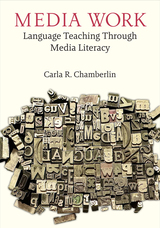 Media Work: Language Teaching Through Media Literacy
Carla R. Chamberlin
University of Michigan Press, 2025 For language learners finding their way in new environments, the deluge of daily media messages—billboards, signs, videos, movies, memes, and advertisements—may be overwhelming. Yet this media provides engaging, accessible opportunities to teach about linguistic features; representations of people, places, and ideas; and social and cultural topics. With an informed, methodical, and purposeful pedagogy, Media Work can help teachers cultivate students’ critical media literacy skills along with language learning.
Media Work offers a practical, hands-on approach to illustrate how language, imagery, and media platforms convey meaning. With almost 100 illustrations for use in teaching and many valuable sample lessons, the book brings to life the processes of observing, interrogating, interpreting, reflecting, and responding to a wide variety of media. Drawing upon critical perspectives from applied linguistics, communication, and media studies (e.g., semiotics, critical discourse analysis, media ecology), it develops a conceptual model that can be adapted for a range of ages and contexts. Chamberlin’s approach enables students to investigate the origins, purposes, and implications of messages that surround them in their everyday lives. With sample topics that range from pets and food to identity and discrimination, teachers can give students opportunities to learn more about their own communities and reflect on their reactions to media messages. By addressing the disinformation and propaganda that are prevalent in today’s media, teachers can also help students confront messages about social issues in order to gain knowledge, confidence, and agency.
 The Media-Democracy Paradox in Ghana: Rethinking Political Communication in an African Context
Wilberforce Sefakor Dzihah
Intellect Books, 2020 This volume focuses on the matrix offered by the media-democracy paradox in Ghana, Africa, and the Global South. As the first black African country south of the Sahara to attain political independence from Great Britain, Ghana is widely acknowledged by the international community as a model of democracy. This book examines the praxis of this democracy and its media, delving into Ghana’s evolvement, media practices, leadership aspirations, pressure group politics, and ideological cleavages.
A rich data source for students, scholars, researchers, and political actors on both the African continent and the diaspora, The Media-Democracy Paradox in Ghana challenges the dominant Western theories of media and democracy, examines the growing influence of social media in political discourse, and provides insightful analysis of debates surrounding political communication and its implications for strengthening democratic culture.
Mediality in the Middle Ages: Abundance and Lack
Christian Kiening
Arc Humanities Press, 2019 In medieval culture, media forms were placesof mediated immediacy. They transported apresence of the divine, but also knowledge ofits unattainability. This volume investigates the multi-layered and fascinatingapproaches of medieval authors to the wordand writing, the body and materiality, andtheir experimentation with the possibilitiesof media before the concept was invented.The book presents, for the first time, acoherent, tightly argued history of medievalmediality, which also casts a new light onmodern thinking about the medial.
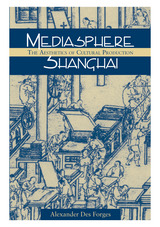 Mediasphere Shanghai: The Aesthetics of Cultural Production
Alexander Des Forges
University of Hawaii Press, 2007 For many in the west, "Shanghai" is the quintessence of East Asian modernity, whether imagined as glamorous and exciting, corrupt and impoverishing, or a complex synthesis of the good, the bad, and the ugly. How did "Shanghai" acquire this power? How did people across China and around the world decide that Shanghai was the place to be?
Mediasphere Shanghai shows that partial answers to these questions can be found in the products of Shanghai’s media industry, particularly the Shanghai novel, a distinctive genre of installment fiction that flourished from the 1890s to the 1930s. Shanghai fiction supplies not only the imagery that we now consider typical of the city, but, more significantly, the very forms—simultaneity, interruption, mediation, and excess—through which the city could be experienced as a business and entertainment center and envisioned as the focal point of a mediasphere with a national and transnational reach. Existing paradigms of Shanghai culture tend to explain the city’s distinctive literary and visual aesthetics as merely the predictable result of economic conditions and social processes, but Alexander Des Forges maintains that literary texts and other cultural products themselves constitute a conceptual foundation for the city and construct the frame through which it is perceived.
Working from a wide range of sources, including installment fiction, photographs, lithographic illustrations, maps, guidebooks, newspapers, and film, Des Forges demonstrates the significant social effects of aesthetic forms and practices. Mediasphere Shanghai offers a new perspective on the cultural history of the city and on the literature and culture of modern China in general.
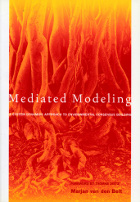 Mediated Modeling: A System Dynamics Approach To Environmental Consensus Building
Marjan van den Belt; Foreword by Thomas Dietz
Island Press, 2004 Mediated modeling is an innovative new approach that enhances the use of computer models as invaluable tools to guide policy and management decisions. Rather than having outside experts dispensing answers to local stakeholders, mediated modeling brings together diverse interests to raise the shared level of understanding and foster a broad and
deep consensus. It provides a structured process based on system dynamics thinking in which community members, government officials, industry representatives, and other stakeholders can work together to produce a coherent, simple but elegant simulation model. Mediated Modeling by Marjan Van Den Belt is a practical guide to participatory modeling for both practitioners and students, one that is firmly theoretically grounded in the field of systems dynamics and environmental modeling. Five in-depth case studies describe the successful use of the technique in a variety of settings, and a final chapter synthesizes the lessons highlighted by the case studies. Mediated Modeling's step-by-step description of the techniques and practical advice regarding implementation offer a real-world solution for all those seeking to make sound decisions about the environment.
 Mediated Mormons: Shifting Religious Identities in the Digital Age
Rosemary Avance
University of Utah Press, 2024 In the early- to mid-2010s, Mitt Romney’s presidential candidacy, the hit Broadway musical The Book of Mormon, and the Church of Jesus Christ of Latter-day Saints’ “I’m a Mormon” media campaign brought critical media attention to Mormonism. In this first lengthy treatment of Mormon identities as they intersect with their religious institution, the internet, and modernity during the so-called “Mormon Moment,” Rosemary Avance explores how LDS stakeholders challenged traditional notions of what it means to be Mormon, vying for control of their own public narratives.
Mediated Mormons uses a case study approach to consider various iterations of Mormon identity as presented by church authorities, faithful members, the secular media, and heterodox and former adherents. These often-conflicting perspectives challenge traditional models of LDS authority, dismantling a monolithic view of Mormons and offering a window into processes of social activism and institutional change in the internet era.
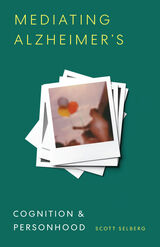 Mediating Alzheimer's: Cognition and Personhood
Scott Selberg
University of Minnesota Press, 2022 An exploration of the representational culture of Alzheimer’s disease and how media technologies shape our ideas of cognition and aging
With no known cause or cure despite a century of research, Alzheimer’s disease is a true medical mystery. In Mediating Alzheimer’s, Scott Selberg examines the nature of this enduring national health crisis by looking at the disease’s relationship to media and representation. He shows how collective investments in different kinds of media have historically shaped how we understand, treat, and live with this disease. Selberg demonstrates how the cognitive abilities that Alzheimer’s threatens—memory, for example—are integrated into the operations of representational technologies, from Polaroid photographs to Post-its to digital artificial intelligence. Focusing on a wide variety of media technologies, such as neuroimaging, art therapy, virtual reality, and social media, he shows how these cognitively oriented media ultimately help define personhood for people with Alzheimer’s. Media have changed the practices of successful aging in the United States, and Selberg takes us deep into how technologies like digital brain-training and online care networks shape ideas of cognition and healthy aging. Packed with startlingly fresh insights, Mediating Alzheimer’s contributes to debates around bioethics, the labor of caregiving, and a national economy increasingly invested in communication and digital media. Probing the very technologies that promise to save and understand our brains, it gives us new ways of understanding Alzheimer’s disease and aging in America.
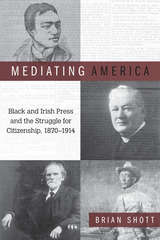 Mediating America: Black and Irish Press and the Struggle for Citizenship, 1870-1914
Brian Shott
Temple University Press, 2019 Until recently, print media was the dominant force in American culture. The power of the paper was especially true in minority communities. African Americans and European immigrants vigorously embraced the print newsweekly as a forum to move public opinion, cohere group identity, and establish American belonging. Mediating America explores the life and work of T. Thomas Fortune and J. Samuel Stemons as well as Rev. Peter C. Yorke and Patrick Ford—respectively two African American and two Irish American editor/activists in the late nineteenth and early twentieth centuries. Historian Brian Shott shows how each of these “race men” (the parlance of the time) understood and advocated for his group’s interests through their newspapers. Yet the author also explains how the newspaper medium itself—through illustrations, cartoons, and photographs; advertisements and page layout; and more—could constrain editors’ efforts to guide debates over race, religion, and citizenship during a tumultuous time of social unrest and imperial expansion. Black and Irish journalists used newspapers to recover and reinvigorate racial identities. As Shott proves, minority print culture was a powerful force in defining American nationhood.
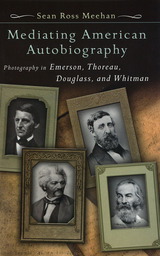 Mediating American Autobiography: Photography in Emerson, Thoreau, Douglass, and Whitman
Sean Ross Meehan
University of Missouri Press, 2008
The emergence of photography in the mid-nineteenth century transformed ideas about how the self and nature could be pictured. Although the autobiographical potential of photography seems self-evident today, Sean Meehan takes us back to the birth of the medium when some of America’s preeminent authors began to think about photography’s implications for the representation of identity and the nature of autobiographical writing.
Both photography and autobiography involve a tension between disclosing and concealing their means of production: a chemical process for one, the writing process for the other. Meehan examines how four major authors—Ralph Waldo Emerson, Henry David Thoreau, Frederick Douglass, and Walt Whitman—were well aware of this tension and explored it in their work. By examining the implications of early photography in their writings, he shows how each engaged the new visual medium, how photography mediated their conceptions of self-representation, and how their appropriation of photographic thinking created a new kind of autobiography.
Examining the metonymic nature of photography, Meehan explores how the new medium influenced conceptions of visual and verbal representation. He intertwines these four writers’ reflections on photography—in Emerson’s Representative Men, Thoreau’s journals, Douglass’s narratives of slavery, and Whitman’s Specimen Days—with theories of photography as expounded by its inventors and observers, from Louis Daguerre and William Talbot in Europe to Oliver Wendell Holmes and Marcus Root in America.
As the first book to focus on the emergence of this new visual medium during the American Renaissance, Mediating American Autobiography shows us what photography means for American literature in general and for the genre most closely linked to it in particular. Because the engagement of these writers with photography has been neglected in previous scholarship, Meehan’s work provocatively bridges the study of two media and illuminates an important aspect of American thought and culture at the dawn of the technological era.
 Mediating Culture in the Seventeenth-Century German Novel: Eberhard Werner Happel, 1647-1690
Gerhild Scholz Williams
University of Michigan Press, 2014 Eberhard Happel, German Baroque author of an extensive body of work of fiction and nonfiction, has for many years been categorized as a “courtly-gallant” novelist. In Mediating Culture in the Seventeenth-Century German Novel, author Gerhild Scholz Williams argues that categorizing him thus is to seriously misread him and to miss out on a fascinating perspective on this dynamic period in German history. Happel primarily lived and worked in the vigorous port city of Hamburg, which was a “media center” in terms of the access it offered to a wide library of books in public and private collections. Hamburg’s port status meant it buzzed with news and information, and Happel drew on this flow of data in his novels. His books deal with many topics of current interest—national identity formation, gender and sexualities, Western European encounters with neighbors to the East, confrontations with non-European and non-Western powers and cultures—and they feature multiple media, including news reports, news collections, and travel writings. As a result, Happel’s use of contemporary source material in his novels feeds our current interest in the impact of the production of knowledge on seventeenth-century narrative. Mediating Culture in the Seventeenth-Century German Novel explores the narrative wealth and multiversity of Happel’s work, examines Happel’s novels as illustrative of seventeenth-century novel writing in Germany, and investigates the synergistic relationship in Happel’s writings between the booming print media industry and the evolution of the German novel.
Mediating Empire: An English Family in China, 1817-1927
Andrew Hillier
Amsterdam University Press, 2020 As part of the growing scholarship on family and empire, this study examines Britain’s presence in China through the lens of one family, arguing that, as the physical embodiment of the imperial project, it provided a social and cultural mechanism for mediating Britain’s imperial power, authority and presence, and forging connections and networks throughout the expanding British world. Drawing on public and private papers, it breaks significant new ground in its development of those themes.
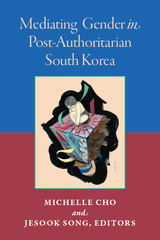 Mediating Gender in Post-Authoritarian South Korea
Michelle Cho and Jesook Song
University of Michigan Press, 2024 Mediating Gender in Post-Authoritarian South Korea focuses on the relationship between media representation and gender politics in South Korea. Its chapters feature notable voices of South Korea’s burgeoning sphere of gender critique enabled by social media, doing what no other academic volume has yet accomplished in the sphere of Anglophone studies on this topic. Seeking to interrogate the role of popular media in establishing and shaping gendered common sense, this volume fosters cross-disciplinary conversations linked by the central thesis that gender discourse and representation are central to the politics, aesthetics, and economics of contemporary South Korea. In the post-authoritarian period (the late 1980s to the #MeToo present), media representation and popular discourse changed the gender conventions that are found at the core of civic, political, and cultural debates.
Mediating Gender in Post-Authoritarian South Korea maps the ways in which popular media and public discourse make the social dynamics of gender visible and open them up for debate and dismantling. In presenting innovative new research on the ways in which popular ideas about gender gain concrete form and political substance through mass mediation, the book’s contributors investigate the discursive production of gender in contemporary South Korea through trends, tropes, and thematics, as popular media become the domain in which new gendered subjectivities and relations transpire. The essays in this volume present cases and media objects that span multiple media and platforms, introducing new ways of thinking about gender as a platform and a conceptual infrastructure in the post-authoritarian era.
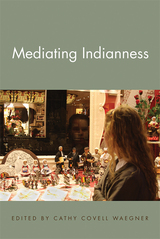 Mediating Indianness
Cathy Covell Waegner
Michigan State University Press, 2015 Mediating Indianness investigates a wide range of media—including print, film, theater, ritual dance, music, recorded interviews, photography, and treaty rhetoric—that have been used in exploitative, informative, educative, sustaining, protesting, or entertaining ways to negotiate Native American identities and images. The contributors to this collection are (Native) American and European scholars whose initial findings were presented or performed in a four-panel format at the 2012 MESEA (Society for Multi-Ethnic Studies: Europe and the Americas) conference in Barcelona. The selection of the term Indianness is deliberate. It points to the intricate construction of ethnicity as filtered through media, despite frequent assertions of “authenticity.” From William “Buffalo Bill” Cody’s claim, extravagantly advertised on both sides of the Atlantic, that he was staging “true-to-life” scenes from Indian life in his Wild West shows to contemporary Native hip-hop artist Quese IMC’s announcement that his songs tell his people’s “own history” and draw on their “true” culture, media of all types has served to promote disparate agendas claiming legitimacy. This volume does not shy away from the issue of evaluation and how it is only tangential to medial artificiality. As evidenced in this collection, “the vibrant, ever-transforming future of Native peoples is located within a complex intersection of cultural influences,” said Susan Power, author of Sacred Wilderness.
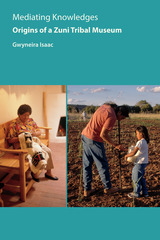 Mediating Knowledges: Origins of a Zuni Tribal Museum
Gwyneira Isaac
University of Arizona Press, 2007 This book tells the story of the search by the Zuni people for a culturally relevant public institution to help them maintain their heritage for future generations. Using a theoretical perspective grounded in knowledge systems, it examines how Zunis developed the A:shiwi A:wan Museum and Heritage Center to mediate between Zuni and Anglo-American values of history and culture. By using in-depth interviews, previously inaccessible archival records, and extensive ethnographic observations, Gwyneira Isaac provides firsthand accounts of the Zunis and non-Zunis involved in the development of the museum.
These personal narratives provide insight into the diversity of perspectives found within the community, as well as tracing the ongoing negotiation of the relationship between Zuni and Anglo-American cultures. In particular, Isaac examines how Zunis, who transmit knowledge about their history through oral tradition and initiation into religious societies, must navigate the challenge of utilizing Anglo-American museum practices, which privilege technology that aids the circulation of knowledge beyond its original narrators.
This book provides a much-needed contemporary ethnography of a Pueblo community recognized for its restrictive approach to outside observers. The complex interactions between Zunis and anthropologists explored here, however, reveal not only Puebloan but also Anglo-American attitudes toward secrecy and the control of knowledge.
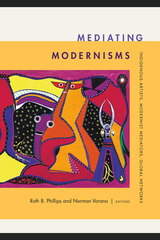 Mediating Modernisms: Indigenous Artists, Modernist Mediators, Global Networks
Ruth B. Phillips and Norman Vorano, editors
Duke University Press, 2025 Mediating Modernisms explores the fertile exchanges between Indigenous artists living in colonial societies and the mid-twentieth century mediators who carried ideas of aesthetic modernism and modernist primitivism into these worlds. Spanning South Africa, North America, Australia, Scandinavia, New Zealand, Brazil, Nigeria, and India, the case studies examine the mediators who played the role of mentors, friends, and patrons to Indigenous artists. Their relationships constituted complex mutual exchanges of aesthetic ideas and practices that inspired artists to create new fusions of modernism with Indigenous art traditions and that reflected their negotiations between affiliation with tradition and embrace of technology, newness, and metropolitan patronage. Challenging current understandings of modernist primitivism and elucidating the creation of the “global contemporary” art world, this volume reveals broader historical patterns, shared ideological and aesthetic dynamics, and the structural parallels that link mediators and Indigenous artists to globally circulating artistic ideas and geopolitical forces.
Contributors. Peter Brunt, Roberto Conduru, Hanna Horsberg Hansen, Elizabeth Harney, Jyotindra Jain, Sandra Klopper, Ian McLean, Anitra Nettleton, Chika Okeke-Agulu, Ruth B. Phillips, Una Rey, Megan Tamati-Quennell, Nicholas Thomas, Norman Vorano, Mark Andrew White
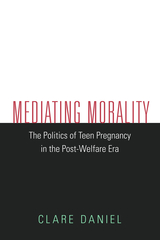 Mediating Morality: The Politics of Teen Pregnancy in the Post-Welfare Era
Clare Daniel
University of Massachusetts Press, 2017 The approach the United States has taken to addressing teen pregnancy—a ubiquitous concern in teen education and perennial topic in popular culture—has changed dramatically over the past few decades. Specifically since the radical overhaul of welfare policy in 1996, Clare Daniel argues, teen pregnancy, previously regarded as a social problem requiring public solutions, is seen as an individual failure on the part of the teens involved.
Daniel investigates coordinated teen pregnancy prevention efforts within federal political discourse, along with public policy, popular culture, national advocacy, and local initiatives, revealing the evidence of this transformation. In the 1970s and 1980s, political leaders from both parties used teen pregnancy to strengthen their attacks on racialized impoverished communities. With a new welfare policy in 1996 that rhetoric moved toward blaming teen pregnancy—seemingly in a race- and class-neutral way—on the teens who engaged in sex prematurely and irresponsibly. Daniel effectively illustrates that the construction of teen pregnancy as an individual's problem has been a key component in a neoliberal agenda that frees the government from the responsibility of addressing systemic problems of poverty, lack of access to education, ongoing structural racism, and more.
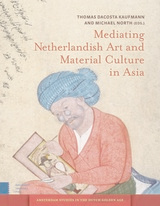 Mediating Netherlandish Art and Material Culture in Asia
Edited by Thomas DaCosta Kaufmann and Michael North
Amsterdam University Press, 2015 While the socio-economic and historical aspects of the Dutch East India Company (VOC) have been extensively documented and researched, the role of the VOC in visual culture and the arts has been relatively neglected. This authoritative volume addresses various aspects of cultural exchange between the Low Countries and Asia. Increased prosperity and the flood of imported goods from Asia had a huge influence on seventeenth-century Holland. To cite some examples: when the VOC spread its merchandise throughout the various regions of Asia, Chinese decorative motives became popular in Indonesia. After the lifting of the seventeenth-century ban on the import of Christian books to Japan, a wave of interest in Dutch culture hit the country, giving rise to Hollandmania, imitation of anything Dutch.
Mediating Netherlandish Art and Material Culture in Asia offers new insights into the world routes travelled by seventeenth-century Dutch visual culture, as well as the rise of Asian influence in the imagery of the Dutch Golden Age.
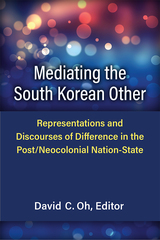 Mediating the South Korean Other: Representations and Discourses of Difference in the Post/Neocolonial Nation-State
David C. Oh, Editor
University of Michigan Press, 2022 Multiculturalism in Korea formed in the context of its neoliberal, global aspirations, its postcolonial legacy with Japan, and its subordinated neocolonial relationship with the United States. The Korean ethnoscape and mediascape produce a complex understanding of difference that cannot be easily reduced to racism or ethnocentrism. Indeed the Korean word, injongchabyeol, often translated as racism, refers to discrimination based on any kind of “human category.” Explaining Korea’s relationship to difference and its practices of othering, including in media culture, requires new language and nuance in English-language scholarship.
This collection brings together leading and emerging scholars of multiculturalism in Korean media culture to examine mediated constructions of the “other,” taking into account the nation’s postcolonial and neocolonial relationships and its mediated construction of self. “Anthrocategorism ,” a more nuanced translation of injongchabyeol, is proffered as a new framework for understanding difference in ways that are locally meaningful in a society and media system in which racial or even ethnic differences are not the most salient. The collection points to the construction of racial others that elevates, tolerates, and incorporates difference; the construction of valued and devalued ethnic others, and the ambivalent construction of co-ethnic others as sympathetic victims or marginalized threats.
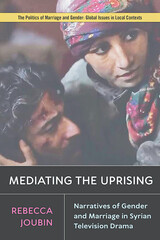 Mediating the Uprising: Narratives of Gender and Marriage in Syrian Television Drama
Rebecca Joubin
Rutgers University Press, 2020 Mediating the Uprising: Narratives of Gender and Marriage in Syrian Television Drama shows how gender and marriage metaphors inform post-uprising Syrian drama for various forms of cultural and political critique. These narratives have become complicated since the uprising due to the Syrian regime’s effort to control the revolutionary discourse. As Syria’s uprising spawned more terrorist groups, some drama creators became nostalgic for pre-war days.
While for some screenwriters a return to pre-2011 life would be welcome after so much bloodshed, others advocated profound cultural and social transformation, instead. They employed marriage and gender metaphors in the stories they wrote to engage in political critique, even at the risk of creating marketing difficulties for the shows or they created escapist stories such as transnational adaptations and Old Damascus tales. Serving as heritage preservation, Mediating the Uprising underscores that television drama creators in Syria have many ways of engaging in protest, with gender and marriage at the heart of the polemic.
Mediating Vulnerability: Comparative Approaches and Questions of Genre
Edited by Anneleen Masschelein, Florian Mussgnug, and Jennifer Rushworth
University College London, 2021 Mediating Vulnerability meditates on the creative and destructive powers of vulnerability in literary form.
To experience vulnerability is to experience the tension between ruin and creativity: a vulnerable species faces extinction but also evolution, and a vulnerable person risks both irreparable harm and transformative connection. Mediating Vulnerability explores how this tension plays out across contemporary literary studies. Examining a variety of approaches to the destructive and remediating powers of genre, the authors consider how vulnerability intersects a range of representational forms including high-profile fiction by Margaret Atwood and Cormac McCarthy as well as lesser-known graphic novels, video games, television, and photography.
 Mediation and Protest Movements
Edited by Bart Cammaerts, Alice Mattoni, and Patrick McCurdy
Intellect Books, 2013 Over the past year, international and national media have been full of stories about protest movements and tumultuous social upheaval from Tunisia to California. But scholars have not yet fully addressed the connection between these movements and the media and communication channels through which their messages spread. Correcting that imbalance, Mediation and Protest Movements explores the nature of the relationship between protest movements, media representation, and communication strategies and tactics. In a series of fascinating essays, contributors to this timely volume focus on the processes and practices in which contemporary protesters engage when acting with and through media. Covering both online and offline contexts as well as mainstream and alternative media, they consider media environments around the world in all their complexity. They also provide a broad and comparative perspective on the ways that protest movements at local and transnational levels engage in mediation processes and develop media practices. Bridging the gap between social movement theory and media and communication studies, Mediation and Protest Movements will serve as an important reference for students and scholars of the media and social change.
 Mediatization(s): Theoretical Conversations between Europe and Latin America
Edited by Carlos A. Scolari, José L. Fernández, and Joan R. Rodríguez-Amat
Intellect Books, 2021 In the last decade, European and Latin American researchers have set a solid theoretical corpus around mediatization. For the first time, this book brings together these two theoretical traditions—the Latin American sociosemiotic matrix consolidated by Eliseo Verón in the 1980s and the institutional and constructivist approaches developed in Europe—to explore the theoretical and applied exchanges between the approaches.
This book presents the work of key authorities on mediatization from Europe and Latin America in one single volume, integrating macro-level theorization with applied observations of mediatization processes from a multidisciplinary perspective. Presented in a handbook format, with comprehensive introductory sections written by the editors and original texts signed by world-renowned researchers, this collection is a vital new resource for researchers and students alike.
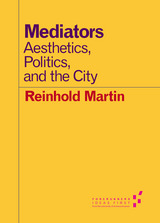 Mediators: Aesthetics, Politics, and the City
Reinhold Martin
University of Minnesota Press, 2014 Reinhold Martin’s Mediators is a series of linked meditations on the globalized city. Focusing on infrastructural, technical, and social systems, Martin explores how the aesthetics and the political economy of cities overlap and interact. He discusses a range of subjects, including the architecture of finance written into urban policy, regimes of enumeration that remix city and country, fictional ecologies that rewrite biopolitics, the ruins of socialism strewn amid the transnational commons, and memories of revolution stored in everyday urban hardware. For Martin, these mediators—the objects, processes, and imaginaries from which these phenomena emerge—serve to explain disparate fragments of a global urbanity.
Forerunners: Ideas First is a thought-in-process series of breakthrough digital publications. Written between fresh ideas and finished books, Forerunners draws on scholarly work initiated in notable blogs, social media, conference plenaries, journal articles, and the synergy of academic exchange. This is gray literature publishing: where intense thinking, change, and speculation take place in scholarship.
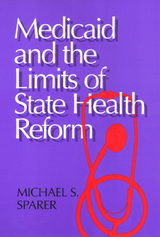 Medicaid And The Limits of State Health Reform
Michael S. Sparer
Temple University Press, 1996 With the defeat of national health reform, many liberals have looked to the states as the source of health policy innovation. At the same time, many in the new Republican majority and several governors also support increased state control. In contrast, Michael S. Sparer convincingly argues that states by themselves can neither satisfy the liberal hope for universal coverage nor the conservative hope for cost containment. He also points to two critical drawbacks to a state-dominated health care system: the variation in coverage among states and the intergovernmental tension that would inevitably accompany such a change. Supporting his arguments, Sparer analyzes the contradictions in operations and policies between the New York and California Medicaid programs. For instance, why does New York spend an average of $7,286 on its Medicaid beneficiaries and California an average of $2,801? The answer, the author suggests, is rooted in bureaucratic politics. California officials enjoy significant bureaucratic autonomy, while the system in New York is fragmented, decentralized, and interest-group dominated. The book supports this conclusion by exploring nursing home and home care policy, hospital care policy, and managed care policy in the two states. Sparer's dissection of the consequences of state-based reform make a persuasive case for national health insurance.
 Medicaid Politics: Federalism, Policy Durability, and Health Reform
Frank J. Thompson
Georgetown University Press, 2012 Medicaid, one of the largest federal programs in the United States, gives grants to states to provide health insurance for over 60 million low-income Americans. As private health insurance benefits have relentlessly eroded, the program has played an increasingly important role. Yet Medicaid’s prominence in the health care arena has come as a surprise. Many astute observers of the Medicaid debate have long claimed that “a program for the poor is a poor program” prone to erosion because it serves a stigmatized, politically weak clientele. Means-tested programs for the poor are often politically unpopular, and there is pressure from fiscally conservative lawmakers to scale back the $350-billion-per-year program even as more and more Americans have come to rely on it. For their part, health reformers had long assumed that Medicaid would fade away as the country moved toward universal health insurance. Instead, Medicaid has proved remarkably durable, expanding and becoming a major pillar of America’s health insurance system. In Medicaid Politics, political scientist Frank J. Thompson examines the program’s profound evolution during the presidential administrations of Bill Clinton, George W. Bush, and Barack Obama and its pivotal role in the epic health reform law of 2010. This clear and accessible book details the specific forces embedded in American federalism that contributed so much to Medicaid’s growth and durability during this period. It also looks to the future outlining the political dynamics that could yield major program retrenchment.
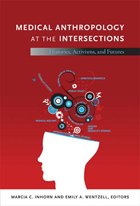 Medical Anthropology at the Intersections: Histories, Activisms, and Futures
Marcia C. Inhorn and Emily A. Wentzell, eds.
Duke University Press, 2012 In this important collection, prominent scholars who helped to establish medical anthropology as an area of study reflect on the field's past, present, and future. In doing so, they demonstrate that medical anthropology has developed dynamically, through its intersections with activism, with other subfields in anthropology, and with disciplines as varied as public health, the biosciences, and studies of race and ethnicity. Each of the contributors addresses one or more of these intersections. Some trace the evolution of medical anthropology in relation to fields including feminist technoscience, medical history, and international and area studies. Other contributors question the assumptions underlying mental health, global public health, and genetics and genomics, areas of inquiry now central to contemporary medical anthropology. Essays on the field's engagements with disability studies, public policy, and gender and sexuality studies illuminate the commitments of many medical anthropologists to public-health and human-rights activism. Essential reading for all those interested in medical anthropology, this collection offers productive insight into the field and its future, as viewed by some of the world's leading medical anthropologists.
Contributors. Lawrence Cohen, Didier Fassin, Faye Ginsburg, Marcia C. Inhorn, Arthur Kleinman, Margaret Lock, Emily Martin, Lynn M. Morgan, Richard Parker, Rayna Rapp, Merrill Singer, Emily A. Wentzell
 Medical Care at the End of Life: A Catholic Perspective
David F. Kelly
Georgetown University Press, 2006 For over thirty years, David F. Kelly has worked with medical practitioners, students, families, and the sick and dying to confront the difficult and often painful issues that concern medical treatment at the end of life. In this short and practical book, Kelly shares his vast experience, providing a rich resource for thinking about life's most painful decisions. Kelly outlines eight major issues regarding end-of-life care as seen through the lens of the Catholic medical ethics tradition. He looks at the distinction between ordinary and extraordinary means; the difference between killing and allowing to die; criteria of patient competence; what to do in the case of incompetent patients; the meaning and use of advance directives; the morality of hydration and nutrition; physician-assisted suicide and euthanasia; and medical futility. Kelly's analysis is sprinkled with significant legal decisions and, throughout, elaborations on how the Catholic medical ethics tradition—as well as teachings of bishops and popes—understands each issue. He provides a helpful glossary to supplement his introduction to the terminology used by philosophical health care ethics. Included in Kelly's discussion is his lucid description of why the Catholic tradition supports the discontinuation of medical care in the Terry Schiavo case. He also explores John Paul II's controversial papal allocution concerning hydration and nutrition for unconscious patients, arguing that the Catholic tradition does not require feeding the permanently unconscious. Medical Care at the End of Life addresses the major issues that inform this last stage of caregiving. It offers a critical guide to understanding the medical ethics and relevant legal cases needed for clear thinking when individuals are faced with those crucial decisions.
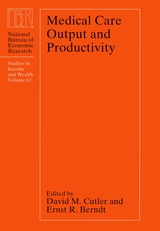 Medical Care Output and Productivity
Edited by David M. Cutler and Ernst R. Berndt
University of Chicago Press, 2001 With the United States and other developed nations spending as much as 14 percent of their GDP on medical care, economists and policy analysts are asking what these countries are getting in return. Yet it remains frustrating and difficult to measure the productivity of the medical care service industries.
This volume takes aim at that problem, while taking stock of where we are in our attempts to solve it. Much of this analysis focuses on the capacity to measure the value of technological change and other health care innovations. A key finding suggests that growth in health care spending has coincided with an increase in products and services that together reduce mortality rates and promote additional health gains. Concerns over the apparent increase in unit prices of medical care may thus understate positive impacts on consumer welfare. When appropriately adjusted for such quality improvements, health care prices may actually have fallen. Provocative and compelling, this volume not only clarifies one of the more nebulous issues in health care analysis, but in so doing addresses an area of pressing public policy concern.
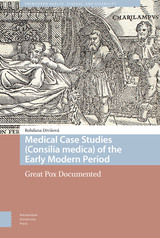 Medical Case Studies (Consilia medica) of the Early Modern Period: Great Pox Documented
Bohdana Divisová
Amsterdam University Press, 2022 Consilia played an important role in not only medieval but also early modern professional health literature. A literary ‘consilium’ consisted of a written statement of one particular case, including the patient's condition and disease as well as advice concerning medical treatment. In the sixteenth century, consilia literature was a common component of the practices of many eminent physicians. This is illustrated through an analysis of consilia from twenty-two different collections and anthologies by fifteen selected authors, who represent university professors, personal physicians, and urban physicians from early modern Italy, France, and German-speaking Central Europe. A closer look at nearly 7,000 consilia shows how important a link they were within the medical community. A detailed view of consilia intended for patients suffering from the ‘French disease’ reveals details about, for instance, the most common treatments for syphilis – mercury and guaiacum – alongside many other interesting and important details.
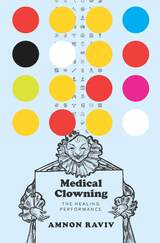 Medical Clowning: The Healing Performance
Amnon Raviv
Seagull Books, 2016 Clowns are not just the stuff of backyard children’s parties anymore. These days, clown doctors see patients—especially children—to introduce humor and imagination into an anxiety-filled and painful experience. The origins of medical clowning can be traced to the Big Apple Circus Clown Care Unit at the Infants and Children’s Hospital of New York, established about thirty years ago. Since that time, the practice has developed extensively and medical clowns now work in hospitals around the world. Over the past ten years, the number of scientific studies on medical clowning has increased, with findings showing the important contribution of medical clowns to children and adults suffering from mild to incurable illnesses.
Medical Clowning is the first guide to this phenomenon, summing up decades of research, education, and practice to give readers a comprehensive look into this innovative field. Amnon Raviv analyzes the performance of medical clowns, looking at research and case studies, and goes on to propose a training and evaluation model, including hands-on exercises to train experienced clowns for work in hospitals.
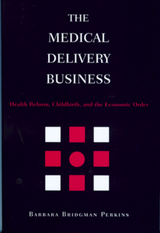 The Medical Delivery Business: Health Reform, Childbirth, and the Economic Order
Perkins, Barbara Bridgman
Rutgers University Press, 2004 Americans at the end of the twentieth century worried that managed care had fundamentally transformed the character of medicine. In The Medical Delivery Business, Barbara Bridgman Perkins uses examples drawn from maternal and infant care to argue that the business approach in medicine is not a new development. Health care reformers throughout the century looked to industrial, corporate, and commercial enterprises as models for the institutions, specialties, and technological strategies that defined modern medicine. In the case of perinatal care, the business model emphasized specialized over primary care, encouraged the use of surgical and technological procedures, and unnecessarily turned childbirth into an intensive care situation. Active management techniques, for example, encouraged obstetricians to accelerate labor with oxytocin to augment their productivity. Despite the achievements of the childbirth and women’s health movement in the 1970s, aggressive medical intervention has remained the birth experience for millions of American women (and their babies) every year. The Medical Delivery Business challenges the conventional view that a dose of the market is good for medicine. While Perkins is sympathetic to the goals of progressive and feminist reformers, she questions whether their strategies will succeed in making medicine more equitable and effective. She argues that the medical care system itself needs to be fundamentally "re-formed," and the reforms must be based on democracy, caring, and social justice as well as economics.
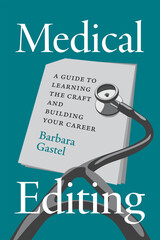 Medical Editing: A Guide to Learning the Craft and Building Your Career
Barbara Gastel
University of Chicago Press From an award-winning instructor of medical editing, this is the first guide designed to introduce the field to prospective and early-career medical editors.
Medical editing is a thriving and wide-ranging specialty within the editorial profession. Its practitioners occupy a unique ecosystem that involves its own style manuals and the ability to work with highly technical medical terminology and issues, and its work helps ensure that health practitioners, researchers, and the public receive sound, understandable medical information. Today, opportunities abound for medical editors—who come from many backgrounds and work in many settings, such as medical journals, medical institutions, and the freelance realm.
Written by an experienced and award-winning editor, Medical Editing: A Guide to Learning the Craft and Building Your Career provides a thorough introduction to the profession. At levels ranging from the punctuation mark to the publication, Barbara Gastel provides accessible and concrete instruction in editing medical writing. Distinctively, the book also explores ethical issues encountered in medical editing and other topics such as working effectively with medical authors, editing medical writing by and for nonnative users of English, and editing medical conference presentations.
For those considering entering medical editing or transitioning from other employment, the book also provides helpful career guidance. Readers will learn about the range of medical editing positions, receive advice on taking medical editing tests for employment, learn about certificates and certifications in the field, and more.
Enhanced by examples, exercises, and humor, Medical Editing will benefit both prospective and beginning medical editors while serving as a useful resource for experienced editors, teachers of courses in related fields, and supervisors mentoring interns or new hires.
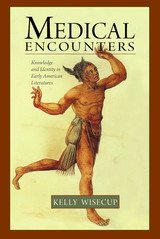 Medical Encounters: Knowledge and Identity in Early American Literatures
Kelly Wisecup
University of Massachusetts Press, 2013 The conquest and colonization of the Americas resulted in all kinds of exchanges, including the transmission of diseases and the sharing of medicines to treat them. In this book, Kelly Wisecup examines how European settlers, Native Americans, and New World Africans communicated medical knowledge in early America, and how the colonists represented what they learned in their literatures.
Against the prevailing view that colonial texts provide insight only into their writers' perspectives, Wisecup demonstrates that Europeans, Natives, and Africans held certain medical ideas in common, including a conception of disease as both a spiritual and a physical entity, and a belief in the power of special rituals or prayers to restore health. As a consequence, medical knowledge and practices operated as a shared form of communication on which everyone drew in order to adapt to a world of devastating new maladies and unfamiliar cures.
By signaling one's relation to supernatural forces, to the natural world, and to other people, medicine became an effective means of communicating a variety of messages about power and identity as well as bodies and minds. Native Americans in Virginia and New England, for example, responded to the nearly simultaneous arrival of mysterious epidemics and peoples by incorporating colonists into explanations of disease, while British American colonists emphasized to their audiences back home the value of medical knowledge drawn from cross-cultural encounters in the New World.
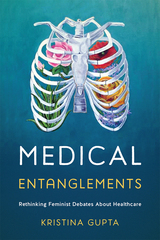 Medical Entanglements: Rethinking Feminist Debates about Healthcare
Kristina Gupta
Rutgers University Press, 2020 Medical Entanglements uses intersectional feminist, queer, and crip theory to move beyond “for or against” approaches to medical intervention. Using a series of case studies – sex-confirmation surgery, pharmaceutical treatments for sexual dissatisfaction, and weight loss interventions – the book argues that, because of systemic inequality, most mainstream medical interventions will simultaneously reinforce social inequality and alleviate some individual suffering. The book demonstrates that there is no way to think ourselves out of this conundrum as the contradictions are a product of unjust systems. Thus, Gupta argues that feminist activists and theorists should allow individuals to choose whether to use a particular intervention, while directing their social justice efforts at dismantling systems of oppression and at ensuring that all people, regardless of race, gender, sexuality, class, or ability, have access to the basic resources required to flourish.
Medical Equipment Engineering: Design, manufacture and applications
Wai Yie Leong
The Institution of Engineering and Technology, 2023 The evolution of medical equipment engineering is progressing rapidly, with advances in digital healthcare technologies such as artificial intelligence, virtual/augmented reality, 3D-printing, robotics and nanotechnologies developing at pace. Medical equipment engineering can assist in surveying workplace inefficiencies, and develop efficient optimisation processes, through data research and intelligent learning automation. This edited book covers the benefits of the integration of lean manufacturing, smart sensors, 5G technology, IoTs, virtual reality, 3D printing, robotics and automation.
 Medical Ethics in the Ancient World
Paul J. Carrick
Georgetown University Press In this book Paul Carrick charts the ancient Greek and Roman foundations of Western medical ethics. Surveying 1500 years of pre-Christian medical moral history, Carrick applies insights from ancient medical ethics to developments in contemporary medicine such as advance directives, gene therapy, physician-assisted suicide, abortion, and surrogate motherhood. He discusses such timeless issues as the social status of the physician; attitudes toward dying and death; and the relationship of medicine to philosophy, religion, and popular morality. Opinions of a wide range of ancient thinkers are consulted, including physicians, poets, philosophers, and patients. He also explores the puzzling question of Hippocrates' identity, analyzing not only the Hippocratic Oath but also the Father of Medicine's lesser-known works. Complete with chapter discussion questions, illustrations, a map, and appendices of ethical codes, Medical Ethics in the Ancient World will be useful in courses on the medical humanities, ancient philosophy, bioethics, comparative cultures, and the history of medicine. Accessible to both professionals and to those with little background in medical philosophy or ancient science, Carrick's book demonstrates that in the ancient world, as in our own postmodern age, physicians, philosophers, and patients embraced a diverse array of perspectives on the most fundamental questions of life and death.
 Medical Ethics in the Renaissance
Winfried Schleiner
Georgetown University Press This book is the first comprehensive examination of medical ethics in the Renaissance. It investigates the ethical considerations, evaluations of procedures, and techniques of problem-solving in the writings of European physicians and surgeons from the mid-sixteenth through the mid-seventeenth centuries. While much of the medical practice and literature of the Renaissance remained a continuation or reinterpretation of ancient medicine, Winfried Schleiner reveals an emerging self-conscious field of medical ethics that should be considered modern, as it increasingly separates medicine from theology, the cure of the body from that of the soul. The exceptions to this trend appear in the discussions of certain sexual topics, such as masturbation, by physicians close to the Counter-Reformation. Analyzing the writings of Protestant, Catholic, and Jewish physicians—the latter developed the most secular medical ethics of the era—he probes the dominant and emerging philosophical ideas together with conceptions of the role of physicians and of physical well-being. Schleiner selects several topics to explore the development of ethical ideas in depth: placebos and the broader issue of lying to patients; the treatment of hysteria; masturbation; and the prevention of sexually transmitted diseases—subjects that are still highly charged moral as well as medical topics today. This pioneering study will be of value to ethicists and to historians of science, medicine, and Renaissance and gender studies.
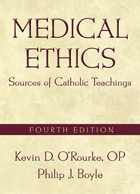 Medical Ethics: Sources of Catholic Teachings, Fourth Edition
Kevin D. O'Rourke
Georgetown University Press, 2015 In a single convenient resource, this revised and updated edition of a classic text organizes and presents clearly the documents of the Catholic Church pertaining to medical ethics. Introductory chapters provide the context for interpreting the Church's teachings and theological values, guiding the reader in how to apply the teachings to particular ethical dilemmas and helping the reader to understand the role of conscience within the Catholic tradition. The teaching of the Church in regard to health care ethics is pertinent not only for health care professionals and students, but for all who are concerned about the common good of society. Medical Ethics examines specific teachings of the Church on over seventy issues in clinical and research ethics, including abortion, AIDS, artificial insemination, assisted suicide, cloning, contraception, euthanasia, gene therapy, health care reform, organ donation and transplantation, organizational ethics, stem cells, surrogate motherhood, and withholding and withdrawing life support. O'Rourke and Boyle bring this fourth edition up to the present day by incorporating recent papal documents regarding the social aspects of health care, assent to Church teaching, and the 2008 papal instruction Dignitas personae, an extremely influential document that illuminates such controversial dilemmas as prenatal adoption, frozen embryos, and genetic diagnosis.
 Medical Ethics: Sources of Catholic Teachings, Third Edition
Kevin D. O'Rourke, OP, and Philip J. Boyle
Georgetown University Press, 1999 In a single convenient resource, this book organizes and presents clearly the documents of the Catholic church pertaining to medical ethics. Introductory chapters provide the context for interpreting the Church's teachings and guide the reader in applying the teachings to particular ethical quandaries. This third edition has been updated to incorporate the statements issued since the preparation of the second edition. The authors have revised the introductory chapters to include ideas from the papal encyclical Splendor Veritatis and "Instruction of the Ecclesial Vocation of the Theologian," published by the Vatican Congregation for the Doctrine of the Faith, concerning the various levels of the teachings of the Church. Other new statements included in this edition are relevant topics from the papal encyclical Evangelium Vitae (abortion, euthanasia, amniocentesis, suicide and withdrawing life support); the Vatican Congregation of Doctrine and Faith on uterine isolation; the U.S. bishops on the care of anencephalic infants, genetic testing, and cloning; and the Pennsylvania Catholic Conference on the treatment for rape in Catholic hospitals.
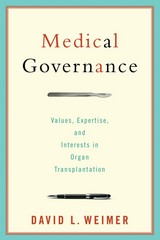 Medical Governance: Values, Expertise, and Interests in Organ Transplantation
David L. Weimer
Georgetown University Press, 2010 Governments throughout the industrialized world make decisions that fundamentally affect the quality and accessibility of medical care. In the United States, despite the absence of universal health insurance, these decisions have great influence on the practice of medicine. In Medical Governance, David Weimer explores an alternative regulatory approach to medical care based on the delegation of decisions about the allocation of scarce medical resources to private nonprofit organizations. He investigates the specific development of rules for the U.S. organ transplant system and details the conversion of a voluntary network of transplant centers to one private rulemaker: the Organ Procurement and Transplantation Network (OPTN). As the case unfolds, Weimer demonstrates that the OPTN is more efficient, nimble, and better at making evidence-based decisions than a public agency; and the OPTN also protects accountability and the public interest more than private for-profit organizations. Weimer addresses similar governance arrangements as they could apply to other areas of medicine, including medical records and the control of Medicare expenditures, making this timely and useful case study a valuable resource for debates over restructuring the U.S. health care system.
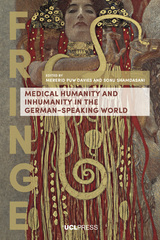 Medical Humanity and Inhumanity in the German-Speaking World
Edited by Mererid Puw Davies and Sonu Shamdasani
University College London, 2020 Medical Humanity and Inhumanity in the German-Speaking World is the first volume dedicated to exploring the interface of medicine, the human and the humane in the German-speaking lands. The volume tracks the designation and making through medicine of the human and inhuman, and the humane and inhumane, from the Middle Ages to the present day. Eight individual chapters undertake explorations into ways in which theories and practices of medicine in the German-speaking world have come to define the human and highlight how such theories and practices have consolidated, or undermined, notions of humane behavior. Cultural analysis is central to this investigation, foregrounding the reflection, refraction and indeed creation of these theories and practices in literature, life-writing, and other discourses and media. Contributors bring to bear perspectives from literary studies, film studies, critical theory, cultural studies, history, and the history of medicine and psychiatry. Thus, this collection is historical in the most expansive sense, for it debates not only what historical accounts bring to our understanding of this topic. It encompasses, too, investigation of life-writing, theory and literary and documentary works and so brings to light elusive, paradoxical, underexplored – yet vital – issues in history and culture.
Medical Imaging Informatics: Machine learning, deep learning and big data analytics
Mamoon Rashid
The Institution of Engineering and Technology, 2024 Medical imaging informatics play an important role in the effectiveness of present-day healthcare systems. Advancement of artificial intelligence, big data analytics, and internet of things technologies contribute greatly to various healthcare applications. Artificial intelligence techniques are contributing to improvements with traditionally human-based systems and ensuring that the accuracy of prediction and diagnosis is being continually enhanced. The development of reliable and accurate healthcare models is becoming ever more possible with the help of machine learning and deep learning technologies. Artificial intelligence has the power to solve many complex problems in medical imaging and is a technology that will help to design the future of many healthcare systems.
Medical Information Processing and Security: Techniques and applications
Amit Kumar Singh
The Institution of Engineering and Technology, 2022 Smart healthcare systems, made up of advanced wearable devices, internet of things (IoT) technologies and mobile internet connectivity, allow significant medical information to be easily and regularly transmitted over public networks. Personal patient information and clinical records are stored on hospitals and healthcare centres and can be accessed remotely by healthcare workers. Due to the widespread increase in the sheer volume of medical data being collected and created all the time, it has never been more important to ensure that such information is collected, stored and processed in a reliable and secure manner.
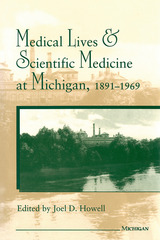 Medical Lives and Scientific Medicine at Michigan, 1891-1969
Joel D. Howell, Editor
University of Michigan Press, 1993 U.S. health care has changed dramatically during the past century. A new breed of physicians use new machines, vaccines, and ideas in ways that have touched the lives of virtually everyone. How and why did these changes occur? The biographical essays comprising this volume address this question through the stories of six scientific innovators at the University of Michigan Medical School. Michigan was the first major U.S. medical school to admit women, to run its own university hospital, and, by the turn of the century, was recognized as one of the finest medical schools in the country. The people whose stories unfold here played a central part in defining the place of medical science at the University of Michigan and in the larger world of U.S. health care. Introductory sections are followed by biographical profiles of George Dock, Thomas Francis, Albion Hewlett, Louise Newburgh, Cyrus Strurgis, and Frank Wilson. Drawing on extensive archival research, the authors provide a richly textured portrait of academic medical life and reveal how the internal content of science and medicine interacted with the social context of each subject's life. Also explored is the relationship between the environment (the hospital, the university, and the city) and the search for knowledge. These narratives expand our perspective on twentieth-century medical history by presenting these individuals' experiences as extended biopsies of the period and place, focal points illuminating the personal nature of medicine and locating the discipline within a social and institutional setting.
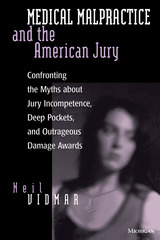 Medical Malpractice and the American Jury: Confronting the Myths about Jury Incompetence, Deep Pockets, and Outrageous Damage Awards
Neil Vidmar
University of Michigan Press, 1997 In this landmark book, Neil Vidmar looks beyond the common perceptions of medical malpractice litigation and finds a system that is fair, impartial, and intelligent. Firmly grounded in a wealth of empirical data, the author presents a fresh look at a civil jury system that has been maligned as out-of-touch, capricious, and disposed to awarding exorbitant, unjustified amounts to plaintiffs whenever they have the opportunity. In an era when tort reform is high on the congressional agenda, Medical Malpractice and the American Jury is almost alone in voicing reason and fact.
Written in a thoroughly inviting, jargon-free style, Medical Malpractice and the American Jury places those cases that go to trial in the broader context of litigation, noting that only about ten percent of malpractice cases ever result in trials. Of those that do go to trial, the author notes, more than two out of three cases are decided in the doctor's favor--repudiating the view that jurors are inherently biased against doctors and are motivated more by sympathy for the plaintiff than by the facts of the case.
Neil Vidmar comprehensively addresses all the claims that have been leveled against the performance of malpractice juries. For example, he compares actual jury decisions on negligence with neutral physicians' ratings of whether negligence occurred in the medical treatment and finds a remarkable consistency--repudiating the view that jurors are unable to understand experts or uncritically defer to their opinion.
"Medical Malpractice and the American Jury is quite simply the most compelling, comprehensive examination of the American jury system yet written. It brings reason and fact to the debate in a way that puts the lie to the many myths surrounding medical negligence cases. For anyone genuinely interested in just solutions, this book should be required reading. To act in ignorance of its findings invites disaster." --Trial
"For anyone really interested in the evidence about the daily grind of the courthouse mill, Neil Vidmar's Medical Malpractice and the American Jury is a good place to start." --Washington Post Book World
Neil Vidmar is Professor of Social Science and Law, Duke Law School, and Professor of Psychology, Duke University.
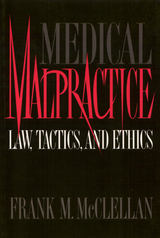 Medical Malpractice: Law, Tactics, and Ethics
Frank M. McClellan
Temple University Press, 1993 From practical to philosophical considerations, this succinct, clear presentation of medical malpractice issues is a valuable resource for the classroom and the reference shelf. Frank M. McClellan illustrates the multitude of considerations that impact the merit of each case, never losing sight of the importance of preserving human dignity in malpractice lawsuits. Early chapters urge the evaluation of legal, medical, and ethical standards, especially the Standard of Care. Part II focuses on assessing and proving compensatory and punitive damages, Part III sets out guidelines for intelligence gathering, medical research, choosing expert witnesses, and preparing for trial. Students of law, medicine, and public health, as well as lawyers and health care professionals, will find in Medical Malpractice a valuable text or reference book. "Problems" in twelve of the thirteen chapters illustrate the range of issues that can arise in malpractice suits. An appendix lists leading cases that have shaped medical malpractice law.
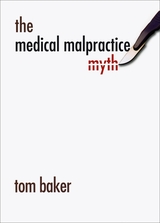 The Medical Malpractice Myth
Tom Baker
University of Chicago Press, 2005 American health care is in crisis because of exploding medical malpractice litigation. Insurance premiums for doctors and malpractice lawsuits are skyrocketing, rendering doctors both afraid and unable to afford to continue to practice medicine. Undeserving victims sue at the drop of a hat, egged on by greedy lawyers, and receive eye-popping awards that insurance companies, hospitals, and doctors themselves struggle to pay. The plaintiffs and lawyers always win; doctors, and the nonlitigious, always lose; and affordable health care is the real victim.
This, according to Tom Baker, is the myth of medical malpractice, and as a reality check he offers The Medical Malpractice Myth, a stunning dismantling of this familiar, but inaccurate, picture of the health care industry. Are there too many medical malpractice suits? No, according to Baker; there is actually a great deal more medical malpractice, with only a fraction of the cases ever seeing the inside of a courtroom. Is too much litigation to blame for the malpractice insurance crisis? No, for that we can look to financial trends and competitive behavior in the insurance industry. Are these lawsuits frivolous? Very rarely. Point by point, Baker—a leading authority on insurance and law—pulls together the research that demolishes the myths that have taken hold about medical malpractice and suggests a series of legal reforms that would help doctors manage malpractice insurance while also improving patient safety and medical accountability.
President Bush has made medical malpractice reform a priority in his last term in office, but if history is any indication, legislative reform would only worsen the situation and perpetuate the gross misunderstanding of it. The debate surely will be transformed by The Medical Malpractice Myth, a book aimed squarely at general readers but with radical conclusions that speak to the highest level of domestic policymaking.
 Medical Malpractice on Trial
Paul C. Weiler
Harvard University Press, 1991 Medical malpractice has been at the center of recurring tort crises for the last quarter-century. In 1960, expenditures on medical liability insurance in the United States amounted to about $60 million. In 1988, the figure topped $7 billion. Physicians have responded not simply with expensive methods of "defensive medicine" but also with successful pressure upon state legislatures to cut back on the tort rights of seriously injured patients. Various reforms have been proposed to deal with the successive crises, but so far none have proved to be effective and fair.
In this landmark book, Paul Weiler argues for a two-part approach to the medical malpractice crisis. First, he proposes a thorough revision of the current tort liability regime, which would concentrate available resources on meeting actual financial losses of seriously injured victims. It would also shift the focus of tort liability from the individual doctor to the hospital or other health care organization. This would elicit more effective quality assurance programs from the institutions that are in the best position to reduce our current unacceptable rate of physician-induced injuries.
But in states such as New York, Florida, and Illinois, where the current situation seems to have gone beyond the help of even drastic tort reform, the preferred solution is a no-fault system. Weiler shows how such a system would provide more equitable compensation, more effective prevention, and more economical administration than any practical alternative.
 Medical Malpractice: Theory, Evidence, and Public Policy
Patricia M. Danzon
Harvard University Press, 1985 How often are patients seriously injured through faulty medical care? And what proportion of these people receive compensation for their injuries and suffering? This is the first book that tries to answer these questions in a careful, scholarly way. Among its important findings is that at most one in ten patients injured through medical negligence receives compensation through the malpractice system.
The focus of public attention has been on the rising cost to physicians of malpractice insurance. Although Patricia Danzon analyzes this question thoroughly, her view is much broader, encompassing the malpractice system itself--the legal process, the liability insurance markets, and the feedback to health care. As an economist, she is concerned with the efficiency or cost-effectiveness of the system from the point of view of its three social purposes: deterrence of medical negligence, compensation of injured patients, and the spreading of risk. To provide evidence of the operation of the system in practice, to distinguish fact from allegation, and to evaluate proposals for reform, she has undertaken a detailed empirical analysis of malpractice claims and insurance markets. It is a major contribution to our understanding of how the system works in practice and how it might be improved.
 Medical Misinformation in Early Modern Germany
Christopher Hutchinson
University of Delaware Press, 2026 The “virality” of diseases—their tendency to circulate simultaneously as biological and media phenomenon—is very familiar to us today. We are all too aware, in our digital age, of how lies, rumors, and misinformation circulate alongside epidemic disease. Medical Misinformation in Early Modern Germany explores the genealogy of this phenomenon and locates the origin of virality––the notion that information and disease circulate analogously––at the turn of the sixteenth century. It investigates literary texts alongside popular vernacular medical pamphlets to reveal the emergence of the notion of the “contagious” in the context of both media and disease. The growth of print, alongside the development of new forms of media, new literary genres, and new forms of visual representation led writers and thinkers to reconsider the ways in which information could be communicated. These anxieties were often expressed through metaphors of disease, creating an emergent rhetoric of virality.
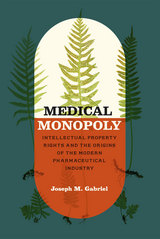 Medical Monopoly: Intellectual Property Rights and the Origins of the Modern Pharmaceutical Industry
Joseph M. Gabriel
University of Chicago Press, 2014 During most of the nineteenth century, physicians and pharmacists alike considered medical patenting and the use of trademarks by drug manufacturers unethical forms of monopoly; physicians who prescribed patented drugs could be, and were, ostracized from the medical community. In the decades following the Civil War, however, complex changes in patent and trademark law intersected with the changing sensibilities of both physicians and pharmacists to make intellectual property rights in drug manufacturing scientifically and ethically legitimate. By World War I, patented and trademarked drugs had become essential to the practice of good medicine, aiding in the rise of the American pharmaceutical industry and forever altering the course of medicine.
Drawing on a wealth of previously unused archival material, Medical Monopoly combines legal, medical, and business history to offer a sweeping new interpretation of the origins of the complex and often troubling relationship between the pharmaceutical industry and medical practice today. Joseph M. Gabriel provides the first detailed history of patent and trademark law as it relates to the nineteenth-century pharmaceutical industry as well as a unique interpretation of medical ethics, therapeutic reform, and the efforts to regulate the market in pharmaceuticals before World War I. His book will be of interest not only to historians of medicine and science and intellectual property scholars but also to anyone following contemporary debates about the pharmaceutical industry, the patenting of scientific discoveries, and the role of advertising in the marketplace.
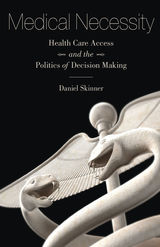 Medical Necessity: Health Care Access and the Politics of Decision Making
Daniel Skinner
University of Minnesota Press, 2019 How the politics of “medical necessity” complicates American health care
The definition of medical necessity has morphed over the years, from a singular physician’s determination to a complex and dynamic political contest involving patients, medical companies, insurance companies, and government agencies. In this book, Daniel Skinner constructs a comprehensive understanding of the politics of defining this concept, arguing that sustained political engagement with medical necessity is essential to developing a health care system that meets basic public health objectives.
From medical marijuana to mental health to reproductive politics, the concept of medical necessity underscores many of the most divisive and contentious debates in American health care. Skinner’s close reading of medical necessity’s production illuminates the divides between perceptions of medical need as well as how the gatekeeper concept of medical necessity tends to frame medical objectives. He questions the wisdom of continuing to use medical necessity when thinking critically about vexing health care challenges, exploring the possibility that contracts, rights, and technology may resolve the contentious politics of medical necessity. Skinner ultimately contends that a major shift is needed, one in which health care administrators, doctors, and patients admit that medical necessity is, at its base, a contestable political concept.
 Medical Problem Solving: An Analysis of Clinical Reasoning
Arthur S. Elstein, Lee S. Shulman, and Sarah A. Sprafka
Harvard University Press, 1978 Competent physicians make accurate diagnoses. How are accurate diagnoses made? This readable book gives some important answers to that question. Experienced physicians were presented with diagnostic problems and asked to solve them. Through the use of trained actors serving as “patients” and with a variety of supplementary techniques, the investigators were able to dissect the process by which diagnoses, right and wrong, are made.
Reporting on the most comprehensive investigation of clinical reasoning yet conducted, the authors present data and conclusions of importance not just to medical educators but to anyone interested in the psychology of problem solving. Rigorous attention to methods, thorough grounding in contemporary theories of problem solving, and a healthy respect for the complexity of real-life situations characterize this remarkable study.
A sampling of its salient findings only suggests the richness of this book. Successful diagnosticians begin to form hypotheses almost as soon as they encounter a patient. They entertain a limited number of hypotheses, but these are tested repeatedly during a workup. New findings are treated as confirming, refuting, or not contributing to the solution contemplated; more elaborate schemes based on a knowledge of probabilities are not used. A common error is to relate new information to a working hypothesis, although the information is, in fact, non-contributory. The performance of even an experienced physician varies markedly from case to case. Two of the most important determinants of competence are information and experience; problem-solving skills without a rich supply of facts are insufficient for diagnostic acumen.
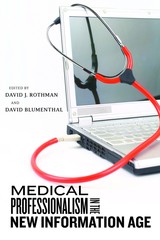 Medical Professionalism in the New Information Age
Edited and with an Introduction by David J. Rothman and David Blumenthal
Rutgers University Press, 2011 With computerized health information receiving unprecedented government support, a group of health policy scholars analyze the intricate legal, social, and professional implications of the new technology. These essays explore how Health Information Technology (HIT) may alter relationships between physicians and patients, physicians and other providers, and physicians and their home institutions. Patient use of web-based information may undermine the traditional information monopoly that physicians have long enjoyed. New IT systems may increase physicians' legal liability and heighten expectations about transparency. Case studies on kidney transplants and maternity practices reveal the unanticipated effects, positive and negative, of patient uses of the new technology. An independent HIT profession may emerge, bringing another organized interest into the medical arena. Taken together, these investigations cast new light on the challenges and opportunities presented by HIT.
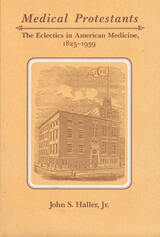 Medical Protestants: The Eclectics in American Medicine, 1825-1939
John S. Haller Jr.
Southern Illinois University Press, 1994 John S. Haller,Jr., provides the first modern history of the Eclectic school of American sectarian medicine. The Eclectic school (sometimes called the "American School") flourished in the mid-nineteenth century when the art and science of medicine was undergoing a profound crisis of faith. At the heart of the crisis was a disillusionment with the traditional therapeutics of the day and an intense questioning of the principles and philosophy upon which medicine had been built. Many American physicians and their patients felt that medicine had lost the ability to cure. The Eclectics surmounted the crisis by forging a therapeutics based on herbal remedies and an empirical approach to disease, a system independent of the influence of European practices. Although rejected by the Regulars (adherents of mainstream medicine), the Eclectics imitated their magisterial manner, establishing two dozen colleges and more than sixty-five journals to proclaim the wisdom of their theory. Central to the story of Eclecticism is that of the Eclectic Medical Institute of Cincinnati, the "mother institute" of reform medical colleges. Organized in 1845, the school was to exist for ninety-four years before closing in 1939. Throughout much of their history, the Eclectic medical schools provided an avenue into the medical profession for men and women who lacked the financial and educational opportunities the Regular schools required, siding with Professor Martyn Paine of the Medical Department of New York University, who, in 1846, had accused the newly formed American Medical Association of playing aristocratic politics behind a masquerade of curriculum reform. Eventually, though, they grudgingly followed the lead of the Regulars by changing their curriculum and tightening admission standards. By the late nineteenth century, the Eclectics found themselves in the backwaters of modern medicine. Unable to break away from their botanic bias and ill-equipped to support the implications of germ theory, the financial costs of salaried faculty and staff, and the research implications of laboratory science, the Eclectics were pushed aside by the rush of modern academic medicine.
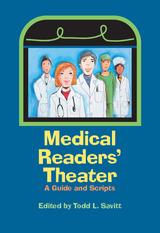 Medical Readers' Theater: A Guide and Scripts
Todd L. Savitt
University of Iowa Press, 2002 We have all had experiences with sickness, care giving, physicians, medical emergencies, hospitals, and doctors’ offices. Health concerns are not solely the domain of medical students, physicians, or nurses—we all deal with our personal well-being and the health of our loved ones on a daily basis. Sometimes these health problems cause us to consider larger social and ethical issues. How do we respond and relate to such matters? In order to help both lay people and medical professionals consider various health care issues, East Carolina University's Brody School of Medicine developed a medical readers' theater program. Compiled for the first time in a single text, Medical Readers’ Theater: A Guide and Scripts provides a vehicle for those who wish to engage in discussions among citizens and professionals about important, topical issues in contemporary medicine. Consisting of fourteen readers’ theater scripts, a step-by-step guide to performing readers’ theater, and questions for post-performance discussions, this volume utilizes stories by William Carlos Williams, Susan Onthank Mates, Arthur Conan Doyle, Pearl Buck, and many more. Physician/patient relationships, organ donation, chronic illness, race and ethnicity, death and dying, and aging are just a few of the topics covered in this valuable text. Medical Readers’ Theater can be used in classrooms, hospitals, libraries, or other community settings where citizens can consider views on issues of common concern in the medical world.
 Medical Report of the Hamilton Rice Seventh Expedition to the Amazon: In Conjunction with the Department of Tropical Medicine of Harvard University, 1924-1925
Richard P. Strong, George Cheever Shattuck, Joseph C. Bequaert, and Ralph Emerson Wheeler
Harvard University Press The Hamilton Rice Seventh Expedition to Amazonia was undertaken partly for general geographical exploration and partly for medical investigation in a section of the Amazon Valley which comprises the greater portion of the most tropical parts of Brazil. The expedition was equipped with complete laboratory apparatus and had further help in various hospitals and clinics, particularly in Mangos and Para. The report of the work is divided into three sections: Part I describes the climate and inhabitants of the country and gives full details about various tropical diseases; Part II discusses the medical and economic entomology of the region; and the third part summarizes briefly the various medical and biological observations made by Dr. Shattuck on the Branco, the Uraricuera, and the Parima Rivers, and adds three other chapters on general biology. A very large number of full-page illustrations and cuts in the text will be of great value to all scientists. Certain sections, intended primarily for workers not especially interested in entomology, have been written with as few technical terms and details as was possible under the circumstances.
 Medical Research for Hire: The Political Economy of Pharmaceutical Clinical Trials
Fisher, Jill A
Rutgers University Press, 2008 Today, more than 75 percent of pharmaceutical drug trials in the United States are being conducted in the private sector. Once the sole province of academic researchers, these important studies are now being outsourced to non-academic physicians. According to Jill A. Fisher, this major change in the way medical research is performed is the outcome of two problems in U.S. health care: decreasing revenue for physicians and decreasing access to treatment for patients. As physicians report diminishing income due to restrictive relationships with insurers, increasing malpractice insurance premiums, and inflated overhead costs to operate private practices, they are attracted to pharmaceutical contract research for its lucrative return. Clinical trials also provide limited medical access to individuals who have no or inadequate health insurance because they offer "free" doctors' visits, diagnostic tests, and medications to participants. Focusing on the professional roles of those involved, as well as key research practices, Fisher assesses the risks and advantages for physicians and patients alike when pharmaceutical drug studies are used as an alternative to standard medical care. A volume in the Critical Issues in Health and Medicine series, edited by Rima D. Apple and Janet Golden
Medical Technics
Don Ihde
University of Minnesota Press, 2019 A personal account of the aging body and advanced technologies by a preeminent philosopher of technology Medical Technics is a rigorous examination of how medical progress has modified our worlds and contributed to a virtual revolution in longevity. Don Ihde offers a unique autobiographical tour of medical events experienced in a decade, beginning in his 70s. Ihde offers experiential and postphenomenological analyses of technologies such as sonography and microsurgery, and ultimately asks what it means to increasingly become a cyborg. Forerunners: Ideas First Short books of thought-in-process scholarship, where intense analysis, questioning, and speculation take the lead
The Medical Trade Catalogue in Britain, 1870-1914
Claire Jones
University of Pittsburgh Press, 2013 By the late nineteenth century, advances in medical knowledge, technology and pharmaceuticals led to the development of a thriving commercial industry. The medical trade catalogue became one of the most important means of promoting the latest tools and techniques to practitioners. Drawing on over 400 catalogues produced between 1870 and 1914, Jones presents a study of the changing nature of medical professionalism. She examines the use of the catalogue in connecting the previously separate worlds of medicine and commerce and discusses its importance to the study of print history more widely.
 The Medical Triangle: Physicians, Politicians, and the Public
Eli Ginzberg
Harvard University Press, 1990 Runaway medical costs, long-term care, market competition, for-profit medicine, nursing shortages—these are but a few of the issues that swirl around in the late twentieth century’s volatile health care scene. How much of the system do we want to change, and how much do we want to keep? Health policy expert Eli Ginzberg examines such crucial questions in his characteristically broad-gauged perspective. Framing the issues in their historical, political, and professional contexts, the author analyzes how we have arrived at the current crisis.
The book focuses on the three sides of the medical triangle that have separate and sometimes conflicting goals: the physicians want to provide the most health care for the most money; the government, which furnishes 40 percent of the system's funding, wants to limit the money it pays out for health care; and the public, with over a billion annual visits to doctors, wants the most health care for the least money.
Ginzberg explains how the core components of our health care system—the community hospital and physicians who have long practiced in a fee-for-service mode—are under attack, and he indicates the factors that make it uncertain whether the destabilization will slow down or accelerate. Moreover, can key health care centers maintain their leadership in a time when new dollars for health are scarce? How will the floundering state of foundations affect medical care in local communities?
In his final chapters the author zeroes in on the special concerns of the public: high-need patients (including those suffering from cancer, catastrophic illness, and the infirmities of old age, or those who are mentally ill or chronically poor), nursing shortages, unsuccessful cost containment, and lack of consensus within the medical triangle about the major issues on our nation's health agenda.
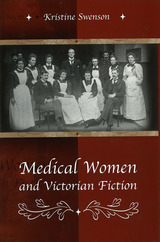 Medical Women and Victorian Fiction
Kristine Swenson
University of Missouri Press, 2005
In Medical Women and Victorian Fiction, Kristine Swenson explores the cultural intersections of fiction, feminism, and medicine during the second half of the nineteenth century in Britain and her colonies by looking at the complex and reciprocal relationship between women and medicine in Victorian culture. Her examination centers around two distinct though related figures: the Nightingale nurse and the New Woman doctor. The medical women in the fiction of Elizabeth Gaskell (Ruth), Wilkie Collins (The Woman in White), Dr. Margaret Todd (Mona McLean, Medical Student), Hilda Gregg (Peace with Honour), and others are analyzed in relation to nonfictional discussions of nurses and women doctors in medical publications, nursing tracts, feminist histories, and newspapers.
Victorian anxieties over sexuality, disease, and moral corruption came together most persistently around the figure of a prostitute. However, Swenson takes as her focus for this volume an opposing figure, the medical woman, whom Victorians deployed to combat these social ills. As symbols of traditional female morality informed and transformed by the new social and medical sciences, representations of medical women influenced public debate surrounding women’s education and employment, the Contagious Diseases Acts, and the health of the empire.
At the same time, the presence of these educated, independent women, who received payment for performing tasks traditionally assigned to domestic women or servants, inevitably altered the meaning of womanhood and the positions of other women in Victorian culture. Swenson challenges more conventional histories of the rise of the actual nurse and the woman doctor by treating as equally important the development of cultural representations of these figures.
 Medical Writings from Early Medieval England
John D. Niles
Harvard University Press, 2023 The first comprehensive edition and translation of Old English writings on health and healing in more than 150 years.
Unlike elsewhere in Europe, vernacular writings on health and healing had a major place in early medieval England. These texts—unique local remedies and translations of late antique Latin treatises—offer insights into the history of science and medicine, social history, scribal practices, and culture. Some cures resemble ones still used today; others are linguistically extravagant, prescribing ambitious healing practices. Alongside recipes for everyday ailments such as headaches are unparalleled procedures for preventing infant mortality, restoring lost cattle, warding off elf-shot, or remedying the effects of flying venom.
Medical Writings from Early Medieval England presents the first comprehensive edition and translation from Old English of these works in more than 150 years. Volume I includes The Old English Herbal, Remedies from Animals, Lacnunga, the Peri Didaxeon, and a compendium of miscellaneous texts.
Medicalized Masculinities
edited by Dana Rosenfeld and Christopher A. Faircloth
Temple University Press, 2006 When medicalization—the characterization of human traits in terms of disease and ailment—first appeared as a concept in the 1970s, most social science gender scholarship focused on female or genderless bodies. The work on men, health, and medicine was scant and tended to depict masculinity as intrinsically damaging to men's health.
Medicalized Masculinities considers how these threads in scholarship failed to consider the male body adequately and presents cutting-edge research into the definition and regulation of masculinity by medicine. Renowned health and gender studies experts examine medicalized conditions such as balding, aging, and other dimensions of the life cycle in the tradition of the sociology of health and gender.
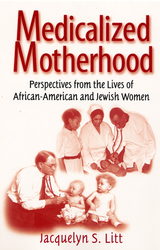 Medicalized Motherhood: Perspectives from the Lives of African-American and Jewish Women
Jacquelyn S. Litt
Rutgers University Press, 1999 The 1946 publication of Dr. Benjamin Spock's Baby and Child Care signaled the pervasive influence of expert 'medicalized motherhood' in mid-twentieth-century America. Throughout the previous two decades, pediatricians and women's magazines alike advised mothers of the importance of physicians' guidance for the everyday care of their children, and Spock's book popularized this advice, particularly among white, middle-class women. When Jacquelyn S. Litt interviewed African-American and Jewish women who raised their children in the 1930s and 1940s, she found that these women responded to experts' advice in ways uniquely shaped by their ethnicity, race, and class. For middle-class African-American and Jewish women, medicalization took place in ethnically/racially segregated networks and functioned as a collectively held strategy for social advance as much as a set of technical practices for raising healthy children. For poor, single African-American mothers, everyday networks offered limited access to medical institutions or mainstream norms. Medical discourse was largely controlled by white women and men, which left these women disempowered in medical institutions and marginal to dominant definitions of acceptable mothering. Litt's book is enriched with many narratives from the mothers themselves. Both the women's voices and her acute sociological research bring to light how medicalized motherhood, while not the single cause of difference and inequality among the women, was a site where they were produced.
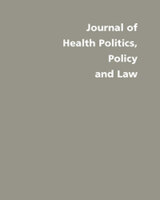 Medicare: Intentions, Effects, and Politics, Volume 26
Mark A. Peterson, ed.
Duke University Press At a time when Medicare stands at the forefront of national politics, Medicare: Intentions, Effects, and Politics moves past the political rhetoric of the moment to provide a groundwork for informed debate. This special issue of the Journal of Health Politics, Policy, and Law offers a historically-based exploration and understanding of Medicare as well as needed perspectives for intelligent reform. A complete understanding of the particular and peculiar structure of Medicare can be gained only by considering the ideas, politics, and institutions of the 1960s that shaped it. With this historical perspective, the articles in this collection can move beyond partisan arguments and politically motivated reform proposals. Instead, they outline educated guidelines for improving Medicare and debunk commonly held but false assumptions about the program. In "How Not to Think about Medicare" the field’s most noted scholar, Theodore Marmor, exposes four such misconceptions, including the program’s seeming inability to control costs and ward off what some call a fiscal tsunami—the aging of the baby boomers. Other contributions address frequently overlooked functions of Medicare. While the program is known for its universal health coverage for the elderly and the disabled, for instance, Medicare also serves a crucial role in overseeing hospital performance and furthering health education. This special issue concludes with a discussion of Marmor’s recently revised classic book, The Politics of Medicare, by five leading specialists who interpret the present Medicare program in light of its original construct and current political influences. Contributors. Michael Gusmano, Jacob Hacker, Nancy M. Kane, Stephen A. Magnus, Theodore Marmor, Jonathan Oberlander, Eric M. Patashnik, Mark A. Peterson, Mark J. Schlesinger, Carolyn Tuohy, Bruce Vladeck, Julian Zelizer
 Medicare Reform: Issues and Answers
Edited by Andrew J. Rettenmaier and Thomas R. Saving
University of Chicago Press, 1999 In 1965, landmark legislation established the national Medicare system as a means of insuring access to medical care for all elderly citizens. Today, rocketing medical costs combined with a rapidly aging population have thrown the Medicare system off balance, moving it perilously close to financial crisis. Medicare already accounts for 2.65 percent of gross domestic product, and by the year 2030 that share is expected to more than double. Further, the trust fund dedicated to Medicare hospitalization coverage is expected to be depleted by 2008. Clearly, Medicare as we know it cannot endure much longer without either imposing a massive tax burden or dissolving altogether under its own financial strain.
Medicare Reform—the first volume in a new series sponsored by the George Bush School of Government and Public Policy at Texas A&M University—tackles the current Medicare predicament head-on, delving into the fundamental issues surrounding the reorganization of the system: whether to allocate Medicare's growing financial load to current workers in the form of higher taxes, shift the onus to future generations, or shortchange both the expectations and care of present recipients by substantially cutting benefits. This volume assembles a group of the most highly respected analysts of health issues to consider the economic forces impacting the surging health care market.
Written for the general reader and offering innovative ideas for policy revision along with critical new data on health care economics, this comprehensive volume provides a timely and thoughtful deliberation on the precarious future of Medicare.
"Because, as Richard Weaver once said, 'ideas have consequences,' this book is important. It will not end the debate on Medicare, but it will begin it."—Phil Gramm, from the foreword
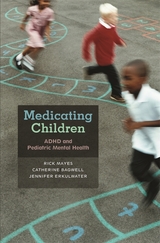 Medicating Children: ADHD and Pediatric Mental Health
Rick Mayes, Catherine Bagwell, and Jennifer Erkulwater
Harvard University Press, 2009 Why and how did ADHD become the most commonly diagnosed mental disorder among children and adolescents, as well as one of the most controversial? Stimulant medication had been used to treat excessively hyperactive children since the 1950s. And the behaviors that today might lead to an ADHD diagnosis had been observed since the early 1930s as “organic drivenness,” and then by various other names throughout the decades.Rick Mayes and colleagues argue that a unique alignment of social and economic trends and incentives converged in the early 1990s with greater scientific knowledge to make ADHD the most prevalent pediatric mental disorder. New movements advocating for the rights of children and the disabled and a massive increase in Medicaid spending on psychotropic drugs all contributed to the dramatic spike in ADHD diagnoses and stimulant use.Medicating Children is unique in that it integrates analyses of the clinical, political, historical, educational, social, economic, and legal aspects of ADHD and stimulant pharmacotherapy. Thus, it will be invaluable to educators, clinicians, parents, and policymakers, all of whom are trying to determine what is in the best interest of millions of children.
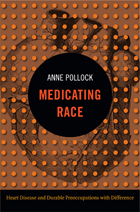 Medicating Race: Heart Disease and Durable Preoccupations with Difference
Anne Pollock
Duke University Press, 2012 In Medicating Race, Anne Pollock traces the intersecting discourses of race, pharmaceuticals, and heart disease in the United States over the past century, from the founding of cardiology through the FDA's approval of BiDil, the first drug sanctioned for use in a specific race. She examines wide-ranging aspects of the dynamic interplay of race and heart disease: articulations, among the founders of American cardiology, of heart disease as a modern, and therefore white, illness; constructions of "normal" populations in epidemiological research, including the influential Framingham Heart Study; debates about the distinctiveness African American hypertension, which turn on disparate yet intersecting arguments about genetic legacies of slavery and the comparative efficacy of generic drugs; and physician advocacy for the urgent needs of black patients on professional, scientific, and social justice grounds. Ultimately, Pollock insists that those grappling with the meaning of racialized medical technologies must consider not only the troubled history of race and biomedicine but also its fraught yet vital present. Medical treatment should be seen as a site of, rather than an alternative to, political and social contestation. The aim of scholarly analysis should not be to settle matters of race and genetics, but to hold medicine more broadly accountable to truth and justice.
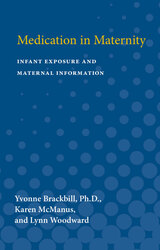 Medication in Maternity: Infant Exposure and Maternal Information
Yvonne Brackbill, Karen McManus, and Lynn Woodward
University of Michigan Press, 1985 Mothers often know very little about the drugs they receive during pregnancy and even less about the drugs they consume during childbirth. The adverse fetal effects of drugs—whether prescription or over-the-counter—and the information mothers receive from the drug and medical communities about those drugs are shown in this International Academy for Research in Learning Disabilities monograph. The research for the study presented in Medication in Maternity included 602 mothers, and as such must be seen as a significant contribution to the field of neonatology in general and to learning disabilities specifically. The authors' findings indicate that many infants are exposed to prenatal and during-birth drugs that could cause learning difficulties or have other toxic effects, and that mothers are rarely told what drugs they are taking or how those drugs could harm their child.
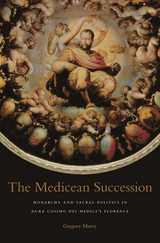 The Medicean Succession: Monarchy and Sacral Politics in Duke Cosimo dei Medici’s Florence
Gregory Murry
Harvard University Press, 2014 In 1537, Florentine Duke Alessandro dei Medici was murdered by his cousin and would-be successor, Lorenzino dei Medici. Lorenzino's treachery forced him into exile, however, and the Florentine senate accepted a compromise candidate, seventeen-year-old Cosimo dei Medici. The senate hoped Cosimo would act as figurehead, leaving the senate to manage political affairs. But Cosimo never acted as a puppet. Instead, by the time of his death in 1574, he had stabilized ducal finances, secured his borders while doubling his territory, attracted an array of scholars and artists to his court, academy, and universities, and, most importantly, dissipated the perennially fractious politics of Florentine life.
Gregory Murry argues that these triumphs were far from a foregone conclusion. Drawing on a wide variety of archival and published sources, he examines how Cosimo and his propagandists successfully crafted an image of Cosimo as a legitimate sacral monarch. Murry posits that both the propaganda and practice of sacral monarchy in Cosimo's Florence channeled preexisting local religious assumptions as a way to establish continuities with the city's republican and renaissance past. In The Medicean Succession, Murry elucidates the models of sacral monarchy that Cosimo chose to utilize as he deftly balanced his ambition with the political sensitivities arising from existing religious and secular traditions.
 The Medici: Citizens and Masters
Robert Black
Harvard University Press The Medici controlled fifteenth-century Florence. Other Italian rulers treated Lorenzo the Magnificent (1449–1492) as an equal. To his close associates, he was “the boss” (“master of the workshop”). But Lorenzo liked to say that he was just another Florentine citizen. Were the Medici like the kings, princes, and despots of contemporary Italy? Or were they just powerful citizens? The Medici: Citizens and Masters offers a novel, comparative approach to answering these questions. It sets Medici rule against princely states such as Milan and Ferrara. It asks how much the Medici changed Florence and contrasts their supremacy with earlier Florentine regimes. Its contributors take diverse perspectives, focusing on politics, political thought, social history, economic policy, religion and the church, humanism, intellectual history, Italian literature, theater, festivals, music, imagery, iconography, architecture, historiography, and marriage. The book will interest students of history, Renaissance studies, Italian literature, and art history as well as anyone keen to learn about one of history’s most colorful, influential, and puzzling families.
The Medici Codex of 1518, Volume 1: Historical Introduction and Commentary
Edited by Edward E. Lowinsky
University of Chicago Press, 1968 The Medici Codex of 1518 is a privately owned choirbook of motets presented by Francis I to Lorenzo de' Medici, Duke of Urbino. One of the most beautiful manuscripts of the time, it offers and anthology of motets by the greatest composers of the Renaissance, masters such as Josquin, Mouton, Brumel, Willaert, Andreas de Silva, and Costanzo Festa.
It is invaluable for transmitting the excellent readings of the repertory of the French Royal Chapel and a number of political motets of great musical and historical interest that reflect events at the French court and are unique to this collection.
Edward E. Lowinsky presents this anthology as part of a series containing critical editions of major sources of fifteenth- and sixteenth-century music in their entirety.
The Medici Codex of 1518, Volume 2: Transcription
Edited by Edward E. Lowinsky
University of Chicago Press, 1968 The Medici Codex of 1518 is a privately owned choirbook of motets presented by Francis I to Lorenzo de' Medici, Duke of Urbino. One of the most beautiful manuscripts of the time, it offers and anthology of motets by the greatest composers of the Renaissance, masters such as Josquin, Mouton, Brumel, Willaert, Andreas de Silva, and Costanzo Festa.
It is invaluable for transmitting the excellent readings of the repertory of the French Royal Chapel and a number of political motets of great musical and historical interest that reflect events at the French court and are unique to this collection.
Edward E. Lowinsky presents this anthology as part of a series containing critical editions of major sources of fifteenth- and sixteenth-century music in their entirety.
The Medici Codex of 1518, Volume 3: Facsimile Edition
Edited by Edward E. Lowinsky
University of Chicago Press, 1968 The Medici Codex of 1518 is a privately owned choirbook of motets presented by Francis I to Lorenzo de' Medici, Duke of Urbino. One of the most beautiful manuscripts of the time, it offers and anthology of motets by the greatest composers of the Renaissance, masters such as Josquin, Mouton, Brumel, Willaert, Andreas de Silva, and Costanzo Festa.
It is invaluable for transmitting the excellent readings of the repertory of the French Royal Chapel and a number of political motets of great musical and historical interest that reflect events at the French court and are unique to this collection.
Edward E. Lowinsky presents this anthology as part of a series containing critical editions of major sources of fifteenth- and sixteenth-century music in their entirety.
Medicinal Plants of Native America, Vols. 1 and 2
Daniel E. Moerman
University of Michigan Press, 1987 In this encyclopedia of North American ethnobotany, thousands of native plants are organized by family, genus, use (illness), tribal culture, and common name. Foreword by Richard I. Ford.
Medicine and American Growth, 1800–1860
James H. Cassedy
University of Wisconsin Press, 1986 “A work of great breadth, originality, and distinction. Rarely do we see such a successful marriage between historical demography and the history of medicine. The interconnections between population increase, migration and immigration on the one hand, and disease and the development of medicine on the other in antebellum America are brilliantly presented.”—Irvine Loudon, Bulletin of the History of Medicine
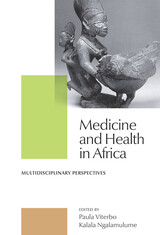 Medicine and Health in Africa: Multidisciplinary Perspectives
Paula Viterbo
Michigan State University Press, 2011 Over the last two decades, the implosion of economies under the burden of debt, the negative repercussions of structural adjustment programs, the crisis of legitimacy, civil wars, and the collapse of some states have resulted in serious health issues across the African continent. Newly emerging diseases, such as Ebola virus and HIV/AIDS have killed and disabled millions. Some “old diseases,” such as yellow fever, tuberculosis, and polio have reappeared. Malaria, cholera, and meningitis continue to kill thousands. In many countries, the medical infrastructure has collapsed, while an increasing number of physicians and nurses have migrated to more hospitable places. Stigmatization of the affected people has exacerbated social and racial discrimination and has affected the implementation of national and international public health programs. The complexity of the situation requires an interdisciplinary approach. This collection, including contributions by historians, sociologists, anthropologists, and biologists, emphasizes the social and cultural contexts of African health, paying particular attention to the history of the colonial public health system and its legacy.
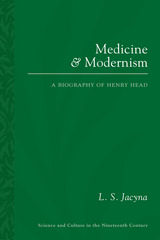 Medicine and Modernism: A Biography of Henry Head
L. S. Jacyna
University of Pittsburgh Press, 2008 This is the first in-depth study of the English neurologist and polymath Sir Henry Head (1861-1940). Head bridged the gap between science and the arts. He was a published poet who had close links with such figures as Thomas Hardy and Siegfried Sassoon. His research into the nervous system and the relationship between language and the brain broke new ground. L. S. Jacyna argues that these advances must be contextualized within wider Modernist debates about perception and language.
In his time, Head was best known for his research into the human nervous system. He did a series of experiments in collaboration with W. H. R. Rivers in which cutaneous nerves were surgically severed in Head's arm and the stages by which sensation returned were chartered over several years. Head’s friend, the philosopher Alfred North Whitehead, drew out the epistemological implications of how, in this new conception, the nervous system furthered the knowledge of the world.
 Medicine and Nation Building in the Americas, 1890-1940
Jose Amador
Vanderbilt University Press, 2015 As medical science progressed through the nineteenth century, the United States was at the forefront of public health initiatives across the Americas. Dreadful sanitary conditions were relieved, lives were saved, and health care developed into a formidable institution throughout Latin America as doctors and bureaucrats from the United States flexed their scientific muscle. This wasn't a purely altruistic enterprise, however, as Jose Amador reveals in Medicine and Nation Building in the Americas, 1890-1940. Rather, these efforts almost served as a precursor to modern American interventionism. For places like Cuba, Puerto Rico, and Brazil, these initiatives were especially invasive.
Drawing on sources in Cuba, Puerto Rico, Brazil, and the United States, Amador shows that initiatives launched in colonial settings laid the foundation for the rise of public health programs in the hemisphere and transformed debates about the formation of national culture. Writers rethought theories of environmental and racial danger, while Cuban reformers invoked the yellow fever campaign to exclude nonwhite immigrants. Puerto Rican peasants flooded hookworm treatment stations, and Brazilian sanitarians embraced regionalist and imperialist ideologies. Together, these groups illustrated that public health campaigns developed in the shadow of empire propelled new conflicts and conversations about achieving modernity and progress in the tropics.
This book is a recipient of the annual Norman L. and Roselea J. Goldberg Prize for the best project in the area of medicine.
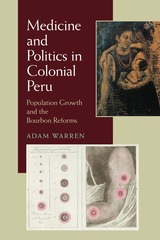 Medicine and Politics in Colonial Peru: Population Growth and the Bourbon Reforms
Adam Warren
University of Pittsburgh Press, 2010
By the end of the eighteenth century, Peru had witnessed the decline of its once-thriving silver industry, and it had barely begun to recover from massive population losses due to smallpox and other diseases. At the time, it was widely believed that economic salvation was contingent upon increasing the labor force and maintaining as many healthy workers as possible. In Medicine and Politics in Colonial Peru,Adam Warrenpresents a groundbreaking study of the primacy placed on medical care to generate population growth during this era.
The Bourbon reforms of the eighteenth century shaped many of the political, economic, and social interests of Spain and its colonies. In Peru, local elites saw the reforms as an opportunity to positively transform society and its conceptions of medicine and medical institutions in the name of the Crown. Creole physicians in particular, took advantage of Bourbon reforms to wrest control of medical treatment away from the Catholic Church, establish their own medical expertise, and create a new, secular medical culture. They asserted their new influence by treating smallpox and leprosy, by reforming medical education, and by introducing hygienic routines into local funeral rites, among other practices.
Later, during the early years of independence, government officials began to usurp the power of physicians and shifted control of medical care back to the church. Creole doctors, without the support of the empire, lost much of their influence, and medical reforms ground to a halt. As Warren’s study reveals, despite falling in and out of political favor, Bourbon reforms and creole physicians were instrumental to the founding of modern medicine in Peru, and their influence can still be felt today.
Medicine and Slavery: The Diseases and Health Care of Blacks in Antebellum Virginia
Todd L. Savitt
University of Illinois Press, 2002 Widely regarded as the most comprehensive study of its kind, this volume offers valuable insight into the alleged medical differences between whites and blacks that translated as racial inferiority and were used to justify slavery and discrimination.
In Medicine and Slavery, Todd L. Savitt evaluates the diet, hygiene, clothing, and living and working conditions of antebellum African Americans, slave and free, and analyzes the diseases and health conditions that afflicted them in urban areas, at industrial sites, and on plantations.
 Medicine and the Ethics of Care
Diana Fritz Cates and Paul Lauritzen, Editors
Georgetown University Press In these essays, a diverse group of ethicists draw insights from both religious and feminist scholarship in order to propose creative new approaches to the ethics of medical care. While traditional ethics emphasizes rules, justice, and fairness, the contributors to this volume embrace an "ethics of care," which regards emotional engagement in the lives of others as basic to discerning what we ought to do on their behalf. The essays reflect on the three related themes: community, narrative, and emotion. They argue for the need to understand patients and caregivers alike as moral agents who are embedded in multiple communities, who seek to attain or promote healing partly through the medium of storytelling, and who do so by cultivating good emotional habits. A thought-provoking contribution to a field that has long been dominated by an ethics of principle, Medicine and the Ethics of Care will appeal to scholars and students who want to move beyond the constraints of that traditional approach.
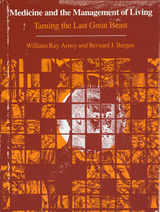 Medicine and the Management of Living: Taming the Last Great Beast
William Ray Arney and Bernard J. Bergen
University of Chicago Press, 1984 In recent years, relations between patients and physicians in America have undergone a dramatic change. The growing acceptance of natural childbirth, support groups for patients with serious illnesses, health maintenance organizations, and hospices for a "happy death" among family and friends is part of a redefinition of medical practice and reformulation of the field of medical power. No longer is medical practice confined to "taming the beast" of death and fighting the diseases observable in the human body. The modern practitioner is now a manager of the living, taking an ecological view of the patient as a "whole person" in a network of relationships.
Medicine and the Management of Living questions how it has been possible for the patient to change from a silenced specimen observed in the clinic to a person whose subjective experience of illness is important to medical practice and discourse. Arney and Bergen ask, What incited the demand that medicine take the whole person, including the patient's presentation of his or her illness, into consideration? And in whose terms are patients speaking about themselves? The authors argue that the inclusion of patients' experiences in medical discourse that has come about since the 1950s is not so much a result of a "patient rebellion" as an activity preciptated by the medical establishment itself. Drawing inspiration from the work of Michel Foucault, Arney and Bergen examine the structure of medical power, contending that new social technologies like support groups make the patient's subjectivity available for medical evaluation, judgment, and manipulation.
Throughout this sensitively written discussion, the authors vivify the issues they raise with excerpts from many sources—the writings of a poet dying of cancer, the comments of doctors pondering their own fatal illnesses, and excerpts from popular magazines, medical journals, and sociological studies. They examine the changing role of the medical profession through history, using a modern advertising image and woodcuts from Vesalius's Renaissance anatomy text to show the symbolic portrayal of health and medicine. Their wide-ranging concerns lead the reader through such topics as teenage pregnancy; the historical treatment of medical anomalies like hermaphrodites and the "elephant man" (John Merrick); and literary representations of illness in Sartre, Chekhov, and Brian Clark's recent Broadway drama, "Whose Life Is It Anyway?"
In a provocative yet thoughtful way, Medicine and the Management of Living points the way for a radical reassessment of medical power and the medical establishment.
 Medicine and the Marketplace: The Moral Dimensions of Managed Care
Kenman L. Wong
University of Notre Dame Press, 1998 "This is an engaging and important volume. Wong takes seriously medical ethics and business ethics by exploring how organizational norms can be appropriately applied to managed care. The book recognizes the extent to which managed care for better or worse marks a moral watershed in the identity of the health professions: it offers reasons why a reformulated business model may do better than a traditional medical model in candidly indicating the balance between legitimate self-interests and caring for the patient. This is a book that no one in bioethics or health care policy should fail to read." —H. Tristram Engelhardt, Jr., Ph.D., M.D., Professor at Baylor College of Medicine
"Professor Wong has made a first-rate contribution to the discussion of the intersection of business and medicine. This work will be a standard in the increasingly complex field for some time to come."
—Scott B. Rae, Ph.D., Professor of Biblical Studies and Christian Ethics, Talbot School of Theology, Biola University
Kenman L. Wong's timely book addresses issues raised by the new intersections of business and medicine with an ethical assessment of emerging health care arrangements. By focusing on organizational ethics, he offers an integrative framework that seeks to balance patient, societal, and corporate interests. To avoid overly simplistic solutions, Wong compares managed care, traditional fee-for-service arrangements, and other proposed health care reform options such as rationing programs and medical savings accounts, and offers an analysis of the ethical issues based upon principles of fairness.
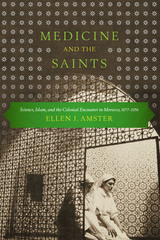 Medicine and the Saints: Science, Islam, and the Colonial Encounter in Morocco, 1877-1956
By Ellen J. Amster
University of Texas Press, 2013 The colonial encounter between France and Morocco took place not only in the political realm but also in the realm of medicine. Because the body politic and the physical body are intimately linked, French efforts to colonize Morocco took place in and through the body. Starting from this original premise, Medicine and the Saints traces a history of colonial embodiment in Morocco through a series of medical encounters between the Islamic sultanate of Morocco and the Republic of France from 1877 to 1956. Drawing on a wealth of primary sources in both French and Arabic, Ellen Amster investigates the positivist ambitions of French colonial doctors, sociologists, philologists, and historians; the social history of the encounters and transformations occasioned by French medical interventions; and the ways in which Moroccan nationalists ultimately appropriated a French model of modernity to invent the independent nation-state. Each chapter of the book addresses a different problem in the history of medicine: international espionage and a doctor’s murder; disease and revolt in Moroccan cities; a battle for authority between doctors and Muslim midwives; and the search for national identity in the welfare state. This research reveals how Moroccans ingested and digested French science and used it to create a nationalist movement and Islamist politics, and to understand disease and health. In the colonial encounter, the Muslim body became a seat of subjectivity, the place from which individuals contested and redefined the political.
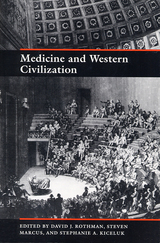 Medicine and Western Civilization
Edited by David J Rothman, Steven Marcus, and Stephanie A. Kiceluk
Rutgers University Press, 1995 This fabulous anthology is sure to be a core text for history of medicine and social science classes in colleges across the country. In order to demonstrate how medical research has influenced Western cultural perspectives, the editors have collected original works from 61 different authors around nine major themes (among them "Anatomy and Destiny," "Psyche and Soma," and "The Construction of Pain, Suffering, and Death"). The authors range from Aristotle, the Bible, and Louis Pasteur, to Masters and Johnson, Ernest Hemingway, and Simone de Beauvoir. The primary sources selected to illustrate the themes are well chosen and contrast with each other nicely. However, the brief background material for the selections center around the authors and offer little or no discussion about the selections' relevance to the topics at hand. This book would be best read in a class or group where the texts' meaning in relation to each other can be discussed, but the book can stand alone if the reader is prepared to do some critical thinking.
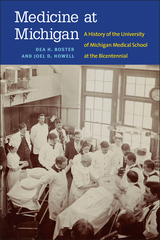 Medicine at Michigan: A History of the University of Michigan Medical School at the Bicentennial
Dea H. Boster and Joel D. Howell
University of Michigan Press, 2017 A trailblazer in American medical education since 1850, the Medical School at the University of Michigan was the first program in the United States to own and operate its own hospital and the earliest major medical school to admit women. In the late nineteenth century, the School emerged as a frontrunner in modern scientific medical education in the United States, and one of the first in the nation to implement both required clinical clerkships and laboratory science as part of their curriculum, including the first full laboratory course in bacteriology. Decades later, the Medical School remained at the vanguard of medical education by increasing its focus on research, and these efforts resulted in world-changing breakthroughs such as field-testing the first safe polio vaccine, proposing a genetic mechanism for sickle cell anemia, inventing the fiber-optic endoscope, and cloning the gene responsible for cystic fibrosis. The Medical School’s history is not without its growing pains: alongside top-tier education and incredible innovation came times of stress with the broader University and Ann Arbor communities, complex expectations and realities for student diversity, and many controversies over curriculum and methodology. Medicine at Michigan explores how the School has dealt with changes in medical science, practice, and social climates over the past 150 years and illuminates the complicated interactions between economic, social, and cultural trends and medical education at the University of Michigan and across the nation. This book will appeal to readers interested in the history of medicine as well as current and former medical faculty members, students, and employees of the University of Michigan Medical School.
 Medicine by Design: The Architect and the Modern Hospital, 1893–1943
Annmarie Adams
University of Minnesota Press, 2008 In the history of medicine, hospitals are usually seen as passive reflections of advances in medical knowledge and technology. In Medicine by Design, Annmarie Adams challenges these assumptions, examining how hospital design influenced the development of twentieth-century medicine and demonstrating the importance of these specialized buildings in the history of architecture. At the center of this work is Montreal’s landmark Royal Victoria Hospital, built in 1893. Drawing on a wide range of visual and textual sources, Adams uses the “Royal Vic”—along with other hospitals built or modified over the next fifty years—to explore critical issues in architecture and medicine: the role of gender and class in both fields, the transformation of patients into consumers, the introduction of new medical concepts and technologies, and the use of domestic architecture and regionally inspired imagery to soften the jarring impact of high-tech medicine. Identifying the roles played by architects in medical history and those played by patients, doctors, nurses, and other medical professionals in the design of hospitals, Adams also links architectural spaces to everyday hospital activities, from meal preparation to the ways in which patients entered the hospital and awaited treatment. Methodologically and conceptually innovative, Medicine by Design makes a significant contribution to the histories of both architectural and medical practices in the twentieth century. Annmarie Adams is William C. Macdonald Professor of Architecture at McGill University and the author of Architecture in the Family Way: Doctors, Houses, and Women, 1870–1900 and coauthor of Designing Women: Gender and the Architectural Profession.
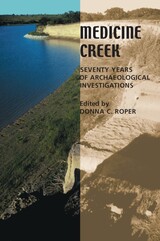 Medicine Creek: Seventy Years of Archaeological Investigations
Edited by Donna C. Roper
University of Alabama Press, 2002 This valuable book is an excellent overview of long-term archaeological investigations in the valley that remains at the forefront of studies on the First Americans.
In southwest Nebraska, a stretch of Medicine Creek approximately 20 kilometers long holds a remarkable concentration of both late Paleoindian and late prehistoric sites. Unlike several nearby similar and parallel streams that drain the divide between the Platte and Republican Rivers, Medicine Creek has undergone 70 years of archaeological excavations that reveal a long occupation by North America's earliest inhabitants.
Donna Roper has collected the written research in this volume that originated in a conference celebrating the 50th anniversary of the 1947 River Basin Survey. In addition to 12 chapters reviewing the long history of archaeological investigations at Medicine Creek, the volume contains recent analyses of and new perspectives on old sites and old data. Two of the sites discussed are considered for pre-Clovis status because they show evidence of human modification of mammoth faunal remains in the late Pleistocene Age. Studies of later occupation of Upper Republican phase sites yield information on the lifeways of Plains village people.
Presented by major investigators at Medicine Creek, the contributions are a balanced blend of the historical research and the current state-of-the-art work and analysis. Roper's comprehensive look at the archaeology, paleontology, and geomorphology at Medicine Creek gives scientists and amateurs a full assessment of a site that has taught us much about the North American continent and its early people.
Medicine, Health Care, & Ethics: Catholic Voices
John F. Morris
Catholic University of America Press, 2007 Medicine, Health Care, and Ethics adds to this rich tradition with a collection of contemporary essays that represent the very best efforts of current Catholic scholarship in the field of health care and medical ethics.
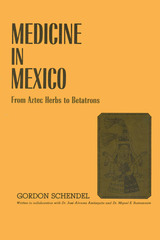 Medicine in Mexico: From Aztec Herbs to Betatrons
By Gordon Schendel
University of Texas Press, 1968 A witch doctor casting an evil spell in a steaming jungle village; a young medical-school graduate cleaning a machete wound in a rat-infested thatched hut; a world-renowned scientist doing research in Mexico City—all were part of the mid-twentieth century medical scene in Mexico, a country of great cultural, socioeconomic, and geographical contrasts. Gordon Schendel, in collaboration with Dr. José Alvarez Amézquita and Dr. Miguel E. Bustamante, relates the history of medicine and public health and welfare in Mexico. This absorbing story begins with a great indigenous culture; continues with Spanish Colonial rule, the unproductive first century of independence from Spain, and the years of revolution; then concentrates on the modern nation. The Aztec civilization evidenced a knowledge of pharmacology and the fundamentals of health far in advance of contemporary European societies. And almost one hundred years before the Pilgrims landed on Plymouth Rock, New Spain boasted a comprehensive "Public Health Administration" and a hospital system that served all classes. However, throughout Mexico's three centuries as a Spanish colony and its first century of independence, millions of its citizens suffered abysmal poverty. Thus when the Republic of Mexico entered its post-Revolutionary era, the majority of its citizens were plagued by superstition, illiteracy, malnutrition, and the other "diseases of the poor." The principal part of this story tells how Mexico attacked these problems, and how in a few short years it became a leader and a model for all Latin America in the fields of medicine and public health and welfare. The book is based on Mr. Schendel's research and observations and on his many interviews with doctors and govemment officials. It will be of interest to the medical profession and to concerned laymen of all nationalities, for it illustrates how a dynamic nation met challenges that all countries of the world, developed and underdeveloped, must face.
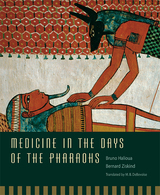 Medicine in the Days of the Pharaohs
Bruno Halioua and Bernard Ziskind
Harvard University Press, 2005 At the temple of Kom Ombo near Aswan, an enigmatic frieze depicts the deified pharaoh Imhotep receiving a set of elaborate implements, some of which strikingly resemble modern surgical instruments: side by side with eye-of-Horus amulets one finds what surely must be forceps. Evidence of the medical practice of ancient Egypt has come down to us not only in pictorial art but also in papyrus scrolls, in funerary inscriptions, and in the mummified bodies of ancient Egyptians themselves.
Bruno Halioua and Bernard Ziskind provide a comprehensive account of pharaonic medicine that is illuminated by what modern science has discovered about the lives (and deaths) of people from all walks of life--farmers, fishermen, miners, soldiers, scribes and priests, embalmers, construction workers, bakers, prostitutes. From mummies and medical papyri we are able to recognize the aches of osteoarthritis, imagine the occupational hazards faced by press-ganged stonemasons, and learn of the gynecological complaints of courtesans. In presenting these stories Halioua and Ziskind throw light on some of the most enduring questions about life and death in antiquity: about physicians whose skills predate Hippocrates by twenty-five centuries and were first made famous by Homer; about the remedies and techniques they employed, at once strange and strangely familiar; about the men, women, and children they treated; and about the diseases and injuries they were called upon to heal.
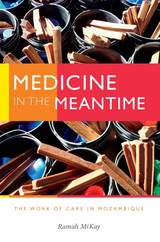 Medicine in the Meantime: The Work of Care in Mozambique
Ramah McKay
Duke University Press, 2018 In Mozambique, where more than half of the national health care budget comes from foreign donors, NGOs and global health research projects have facilitated a dramatic expansion of medical services. At once temporary and unfolding over decades, these projects also enact deeply divergent understandings of what care means and who does it. In Medicine in the Meantime, Ramah McKay follows two medical projects in Mozambique through the day-to-day lives of patients and health care providers, showing how transnational medical resources and infrastructures give rise to diverse possibilities for work and care amid constraint. Paying careful attention to the specific postcolonial and postsocialist context of Mozambique, McKay considers how the presence of NGOs and the governing logics of the global health economy have transformed the relations—between and within bodies, medical technologies, friends, kin, and organizations—that care requires and how such transformations pose new challenges for ethnographic analysis and critique.
Medicine, Law, and the State in Imperial Russia
Elisa M. Becker
Central European University Press, 2011 Examines the theoretical and practical outlook of forensic physicians in Imperial Russia, from the 18th to the early 20th centuries, arguing that the interaction between state and these professionals shaped processes of reform in contemporary Russia. It demonstrates the ways in which the professional evolution of forensic psychiatry in Russia took a different turn from Western models, and how the process of professionalization in late imperial Russia became associated with liberal legal reform and led to the transformation of the autocratic state system.
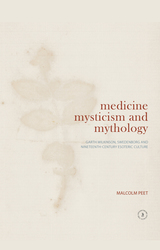 Medicine, Mysticism and Mythology: Garth Wilkinson, Swedenborg and Nineteenth-Century Esoteric Culture
Malcolm Peet
Swedenborg Foundation Publishers, 2018 Malcolm Peet’s Medicine, Mysticism and Mythology: Garth Wilkinson, Swedenborg and Nineteenth-Century Esoteric Culture explores the life and cultural milieu of the nineteenth-century Swedenborgian James John Garth Wilkinson (1812-99), whose largely forgotten influence touched a diverse range of intellectual fields and social reform movements. In the early chapters, Peet offers a brief biographical sketch of Wilkinson and a concise history of Swedenborg’s reception in England, touching on the involvement of such figures as John Clowes, Robert Hindmarsh, Manoah Sibly, Ebenezer Sibly, and Charles Augustus Tulk.
Subsequent chapters go on to explore Wilkinson’s early role in publishing the poetry of William Blake; his dealings with Thomas Carlyle and Ralph Waldo Emerson; his lifelong friendship with Henry James, Sr; his association with Daniel Dunglas Home, Thomas Lake Harris, and Andrew Jackson Davis; his homeopathic practice and its influence on James Tyler Kent; and his engagement with such causes as utopian socialism, environmentalism, women’s suffrage, antivivisectionism, and the deregulation of medicine. The book concludes with a broader study of Wilkinson’s interest in mythology, psychology, and Christian spiritualism.
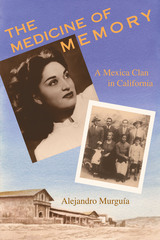 The Medicine of Memory: A Mexica Clan in California
By Alejandro Murguía
University of Texas Press, 2002 "People who live in California deny the past," asserts Alejandro Murguía. In a state where "what matters is keeping up with the current trends, fads, or latest computer gizmo," no one has "the time, energy, or desire to reflect on what happened last week, much less what happened ten years ago, or a hundred." From this oblivion of memory, he continues, comes a false sense of history, a deluded belief that the way things are now is the way they have always been. In this work of creative nonfiction, Murguía draws on memories—his own and his family's reaching back to the eighteenth century—to (re)construct the forgotten Chicano-indigenous history of California. He tells the story through significant moments in California history, including the birth of the mestizo in Mexico, destruction of Indian lifeways under the mission system, violence toward Mexicanos during the Gold Rush, Chicano farm life in the early twentieth century, the Chicano Movement of the 1960s, Chicano-Latino activism in San Francisco in the 1970s, and the current rebirth of Chicano-Indio culture. Rejecting the notion that history is always written by the victors, and refusing to be one of the vanquished, he declares, "This is my California history, my memories, richly subjective and atavistic."
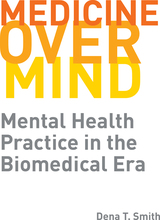 Medicine over Mind: Mental Health Practice in the Biomedical Era
Dena T. Smith
Rutgers University Press, 2019 We live in an era in which medicalization—the process of conceptualizing and treating a wide range of human experiences as medical problems in need of medical treatment—of mental health troubles has been settled for several decades. Yet little is known about how this biomedical framework affects practitioners’ experiences. Using interviews with forty-three practitioners in the New York City area, this book offers insight into how the medical model maintains its dominant role in mental health treatment. Smith explores how practitioners grapple with available treatment models, and make sense of a field that has shifted rapidly in just a few decades. This is a book about practitioners working in a medicalized field; for some practitioners this is a straightforward and relatively tension-free existence while for others, who believe in and practice in-depth talk therapy, the biomedical perspective is much more challenging and causes personal and professional strains.
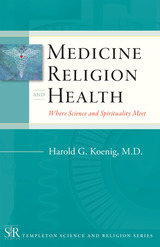 Medicine, Religion, and Health: Where Science and Spirituality Meet
Harold G Koenig
Templeton Press, 2008 Medicine, Religion, and Health: Where Science and Spirituality Meet will be the first title published in the new Templeton Science and Religion Series, in which scientists from a wide range of fields distill their experience and knowledge into brief tours of their respective specialties. In this, the series' maiden volume, Dr. Harold G. Koenig, provides an overview of the relationship between health care and religion that manages to be comprehensive yet concise, factual yet inspirational, and technical yet easily accessible to nonspecialists and general readers. Focusing on the scientific basis for integrating spirituality into medicine, Koenig carefully summarizes major trends, controversies, and the latest research from various disciplines and provides plausible and compelling theoretical explanations for what has thus far emerged in this relatively young field of study. Medicine, Religion, and Health begins by defining the principal terms and then moves on to a brief history of religion's role in medicine before delving into the current state of research. Koenig devotes several chapters to exploring the outcomes of specific studies in fields such as mental health, cardiovascular disease, and mortality. The book concludes with a review of the clinical applications derived from the research. Koenig also supplies several detailed appendices to aid readers of all levels looking for further information. Medicine, Religion, and Health will shed new light on critical contemporary issues. They will whet readers' appetites for more information on this fascinating, complex, and controversial area of research, clinical activity, and widespread discussion. It will find a welcome home on the bookshelves of students, researchers, clinicians, and other health professionals in a variety of disciplines.
Medicine Show
Tom Yuill
University of Chicago Press, 2010 In Medicine Show, inner conflict is wonderfully realized in the clash of down-home plain speech and European high culture utterances. Freely translating and adapting Catullus (Latin), Villon (Middle French), Corbiere (French), Hikmet (Turkish), and Orpheus (Greek), and placing them alongside Jagger and Richards, skinheads, and psalms, Tom Yuill’s book mirrors an old-style hawking of wares, with all the charm and absurdity that results when high culture meets pop, when city meets small town, and when provincialism confronts urbanity. Here, the poems talk to one another, one poem nudging the cusps of many others, those poems touching still others' circumferences. Yuill, by invoking the Rolling Stones as muses and as background music, offers cover versions of Shakespeare, Keats, and Dylan Thomas, ultimately giving us a new kind of verse, funneled through the languages and rhythms of his masters' voices.
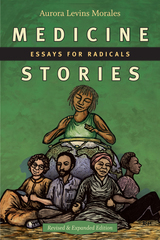 Medicine Stories: Essays for Radicals
Aurora Levins Morales
Duke University Press, 2019 In this revised and expanded edition of Medicine Stories, Aurora Levins Morales weaves together insights and lessons learned over a lifetime of activism to offer a new theory of social justice. Calling for a politics of integrity that recognizes the complicated wholeness of individual and collective lives, Levins Morales delves among the interwoven roots of multiple oppressions, exposing connections, crafting strategies, and uncovering the wellsprings of resilience and joy. Throughout these twenty-eight essays—twenty-one of which are new or extensively revised—she exposes the structures and mechanisms that silence voices and divide movements. The result is a medicine bag full of techniques and perspectives to build a universal solidarity that is flexible, nuanced, and strong enough to fundamentally shift our world toward justice. Intimately personal and globally relevant, Medicine Stories brings clarity and hope to tangled, emotionally charged social issues in beautiful and accessible language.
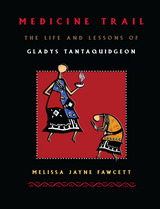 Medicine Trail: The Life and Lessons of Gladys Tantaquidgeon
Melissa Jayne Fawcett
University of Arizona Press, 2000 Contrary to the fictional account of James Fenimore Cooper, the Mohegan/Mohican nation did not vanish with the death of Chief Uncas more than three hundred years ago. In the remarkable life story of one of its most beloved matriarchs—100-year-old medicine woman Gladys Tantaquidgeon—Medicine Trail tells of the Mohegans' survival into this century. Blending autobiography and history, with traditional knowledge and ways of life, Medicine Trail presents a collage of events in Tantaquidgeon's life. We see her childhood spent learning Mohegan ceremonies and healing methods at the hands of her tribal grandmothers, and her Ivy League education and career in the white male-dominated field of anthropology. We also witness her travels to other Indian communities, acting as both an ambassador of her own tribe and an employee of the federal government's Bureau of Indian Affairs. Finally we see Tantaquidgeon's return to her beloved Mohegan Hill, where she cofounded America's oldest Indian-run museum, carrying on her life's commitment to good medicine and the cultural continuance and renewal of all Indian nations. Written in the Mohegan oral tradition, this book offers a unique insider's understanding of Mohegan and other Native American cultures while discussing the major policies and trends that have affected people throughout Indian Country in the twentieth century. A significant departure from traditional anthropological "as told to" American Indian autobiography, Medicine Trail represents a major contribution to anthropology, history, theology, women's studies, and Native American studies.
The Medicine Wheel: Environmental Decision-Making Process of Indigenous Peoples
Michael E. Marchand
Michigan State University Press, 2020 The Medicine Wheel built by Indigenous people acknowledges that ecosystems experience unpredictable recurring cycles and that people and the environment are interconnected. The Western science knowledge framework is incomplete unless localized intergenerational knowledge is respected and becomes part of the problem-definition and solution process. The goal of this book is to lay the context for how to connect Western science and Indigenous knowledge frameworks to form a holistic and ethical decision process for the environment. What is different about this book is that it not only describes the problems inherent to each knowledge framework but also offers new insights for how to connect culture and art to science knowledge frameworks. Read this book and learn how you can move beyond stereotypes to connect with nature.
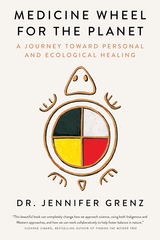 Medicine Wheel for the Planet: A Journey Toward Personal and Ecological Healing
Jennifer Grenz
University of Minnesota Press, 2024 A personal journey of bringing together Western science and Indigenous ecology to transform our understanding of the human role in healing our planet
I used to be an ecologist. . . . Now, I am a community gatherer, working to help bring healing beyond just the land. I am a story-listener. I am a storyteller. I am a shaper of ecosystems. I work on bringing communities together, in circle, to listen to each other. A farm kid at heart, and a Nlaka’pamux woman of mixed ancestry, Dr. Jennifer Grenz always felt a deep connection to the land. However, after nearly two decades of working as a restoration ecologist in the Pacific Northwest, she became frustrated that despite the best efforts of her colleagues and numerous volunteers, they weren’t making the meaningful change needed for plant, animal, and human communities to adapt to a warming climate. Restoration ecology is grounded in an idea that we must return the natural world to an untouched, pristine state, placing humans in a godlike role—a notion at odds with Indigenous histories of purposeful, reciprocal interaction with the environment. This disconnect sent Dr. Grenz on a personal journey of joining her head (Western science) and her heart (Indigenous worldview) to find a truer path toward ecological healing. In Medicine Wheel for the Planet, building on sacred stories, field observations, and her own journey, Dr. Grenz invites readers to share in the teachings of the four directions of the medicine wheel: the North, which draws upon the knowledge and wisdom of elders; the East, where we let go of colonial narratives and see with fresh eyes; the South, where we apply new-old worldviews to envision a way forward; and the West, where a relational approach to land reconciliation is realized. Eloquent, inspiring, and disruptive, Medicine Wheel for the Planet circles around an argument that we need more than a singular worldview to protect the planet and make the significant changes we are running out of time for.
 Medicine Worth Paying For: Assessing Medical Innovations
Howard Frazier
Harvard University Press, 1995 How is medicine doing at the end of the twentieth century? While there has been no end of studies of our health care system and proposals for changing it, there have been few credible studies of the risks and benefits of widely used medical treatments. We simply do not always know whether one treatment is better than another or whether a particular drug is worth the price.
Medical technology assessment is the discipline that studies what does and does not work in medicine. Howard Frazier and Frederick Mosteller are leading figures in this field. In Medicine Worth Paying For they attempt something completely new: to distill the methods and knowledge base of their highly specialized discipline into a text that is accessible—and therefore of great value—to a nontechnical audience.
This book calls attention to the importance of technology assessment in medicine—the rigorous evaluation of the effects of medical treatments—with particular reference to medical innovations. Also, making use of a series of carefully selected cases, the authors identify important policy implications that can be drawn from the study of successful medical innovations. These case studies of medical successes are a rich source of examples of the effects, good and bad, of the application of technology to health care and of attempts to influence the diffusion of technologies in health care.
Medicine Worth Paying For should be of interest to a variety of readers, particularly those concerned with health policy, investigators studying health services, those in the health professions, nonprofessionals who wish to maintain and improve the performance of the health care system, and others who simply want a system that provides benefits greater than risks at an acceptable financial cost.
 Medicines That Feed Us: Plants, Healing, and Sovereignty in a Toxic World
Stacey A. Langwick
Duke University Press, 2026 Medicines That Feed Us examines the relationship between toxicity and remedy in the face of the intertwined health and environmental crises that are shaping life in the twenty-first century. Through ethnographic work with organizations that use plant-based healing and sustainable farming practices in Tanzania, Stacey A. Langwick asks what it means to heal in a toxic world. Expanding on the Kiswahili phrase dawa lishe, or medicines that feed us, Langwick describes the potency of plant medicines in therapeutic projects that address bodies and environments together. These efforts challenge biomedicine’s intense focus on the internal dynamics of biological bodies and its externalization of the modern agricultural, industrial, and land management practices that impact it. Dawa lishe is not a call to return to the traditional, but an invitation to join contemporary experiments in how we know, use, and govern therapeutic plants. Medicines That Feed Us offers alternative ways of living and dying, growing and decaying, composing and decomposing which acknowledge the interdependence of bodily and ecological health.
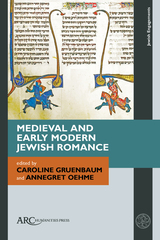 Medieval and Early Modern Jewish Romance
Caroline Gruenbaum
Arc Humanities Press, 2023
This study features essays from leading scholars highlighting the important Jewish contributions to the popular medieval genre of romance. Writing against strict notions of genre boundaries and canonization, this volume provides a new understanding of medieval and early modern romance through a working definition consisting of variable elements, including language, literary devices, plot, and characters. The contributions in this volume establish that many texts written in the medieval and early modern Jewish communities across Europe and beyond can be classified as "romance.” Each of the nine chapters as well as the afterword by Eli Yassif discusses romance as it relates to the medieval and early modern Jewish world, as well as the greater non-Jewish context. This volume places Jewish texts into the scholarly conversation as sources for forming a new understanding of the genre of romance across religious and cultural boundaries.
Medieval and Early Renaissance Medicine: An Introduction to Knowledge and Practice
Nancy G. Siraisi
University of Chicago Press, 1990 Western Europe supported a highly developed and diverse medical community in the late medieval and early Renaissance periods. In her absorbing history of this complex era in medicine, Siraisi explores the inner workings of the medical community and illustrates the connections of medicine to both natural philosophy and technical skills.
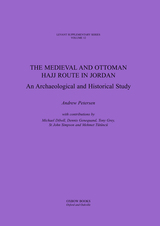 The Medieval and Ottoman Hajj Route in Jordan: An Archaeological and Historical Study
A. Petersen
Council for British Research in the Levant, 2012 As one of the five pillars of Islam the pilgrimage to Mecca (the Hajj) is central to the life of all Muslims. A network of roads radiates from the Hijaz like a giant spider's web, connecting Mecca to all parts of the Muslim world. Historically the most significant of these routes starts at Damascus in Syria, and is a direct continuation of the ancient trade route connecting Arabia to the Levant. The Prophet Muhammad is known to have used this route when he travelled as a merchant from Mecca to Bosra in Syria. In more recent times this was the route chosen for the Hijaz railway which figured prominently in the great Arab Revolt. A significant part of this route runs through Jordan, from the wide grasslands of the north to the sandy desert of the far south. This book documents the archaeological and architectural remains which line this route, paying particular attention to the forts and cisterns built and maintained by the Ottoman rulers from the 16th century onwards. A series of introductory chapters provide the historical context, with an emphasis on the political and military significance of the route from the 16th to the 18th centuries. In addition to the detailed coverage of Jordanian Hajj forts, the book also describes the sites and path of the route through Syria and Saudi Arabia. The final part of the book describes the results of excavations at one of the forts, which gives an insight into the material culture of both the pilgrims and the soldiers who manned the forts.
Medieval Antisemitism?
François Soyer
Arc Humanities Press, 2019 Is it possible to talk about antisemitism in the Middle Ages before the appearance of scientific concepts of "race"? In this work, François Soyer examines the nature of medieval anti-Jewish sentiment and violence. Analysing developments in Europe between 1100 and 1500, he points to the tensions in medieval anti-Jewish thought amongst thinkers who hoped to convert Jews and blamed Talmudic scholarship for their obduracy and yet who also, conversely, often essentialized Judaism to the point that it transformed into the functional equivalent of the modern concept of race. In a nuanced manner, he argues that, just as many historians now refer to "racisms" in the plural, we should not consider antisemitism as a monolithic concept but accept the existence of independent historical meanings and thus of antisemitisms (plural), including "medieval antisemitism" as distinct from anti-Judaism.
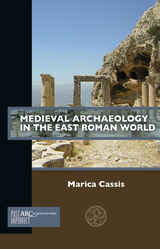 Medieval Archaeology in the East Roman World
Marica Cassis
Arc Humanities Press, 2024
Medieval archaeology of the East Roman world is key to understanding the populations that are invisible in contemporary political and religious sources. Although scholars have long studied the religious and elite structures of the East Roman world, dedicated analysis of the material remains of ordinary and rural people is relatively new. Yet this work is essential to understanding the people who lived in lands as varied as Italy and northern Mesopotamia between the fourth and fifteenth centuries, as well as the continuity of their communities. This book argues that when approached as a series of microhistories, medieval archaeology in the East Roman world is the archaeology of complex settlements, each of which was forced to react, positively or negatively, to the varied changes of the period. It is the archaeology of landscapes, of households, and of resilience; in recognizing this, we gain a more nuanced view of the East Roman world.
 The Medieval Art of Fear
Ravinder S. Binning
University of Chicago Press A bold new approach to medieval art and architecture’s shaping of psychosomatic experience.
In the medieval world, experiences of fear attained a mystical significance: monks, urban publics, and even emperors pursued horror and grief to explore the limits of fantasy, sensation, and catharsis. In this book, Ravinder S. Binning examines an expansive archive ranging from poetry and scientific treatises to artistic works in ivory and crystal to recover an aesthetic tradition centered on optical tension, spatial suspense, and tactile experience.
Moving between early monastic spaces in Egypt and major urban centers like Constantinople from the fourth through the thirteenth centuries, The Medieval Art of Fear shows how the psychosomatic experience of fear became the deliberate object of mystical practices, meditation, and other embodied techniques across the medieval world. The result is a powerful exploration of the aesthetic effects behind some of the medieval world’s most ambitious works, whose influence extends well beyond the Middle Ages.
 Medieval Autographies: The "I" of the Text
A. C. Spearing
University of Notre Dame Press, 2012 In Medieval Autographies, A. C. Spearing develops a new engagement of narrative theory with medieval English first-person writing, focusing on the roles and functions of the “I” as a shifting textual phenomenon, not to be defined either as autobiographical or as the label of a fictional speaker or narrator. Spearing identifies and explores a previously unrecognized category of medieval English poetry, calling it "autography.” He describes this form as emerging in the mid-fourteenth century and consisting of extended nonlyrical writings in the first person, embracing prologues, authorial interventions in and commentaries on third-person narratives, and descendants of the dit, a genre of French medieval poetry. He argues that autography arose as a means of liberation from the requirement to tell stories with preordained conclusions and as a way of achieving a closer relation to lived experience, with all its unpredictability and inconsistencies. Autographies, he claims, are marked by a cluster of characteristics including a correspondence to the texture of life as it is experienced, a montage-like unpredictability of structure, and a concern with writing and textuality.
Beginning with what may be the earliest extended first-person narrative in Middle English, Winner and Waster, the book examines instances of the dit as discussed by French scholars, analyzes Chaucer’s Wife of Bath’s Prologue as a textual performance, and devotes separate chapters to detailed readings of Hoccleve’s Regement of Princes prologue, his Complaint and Dialogue, and the witty first-person elements in Osbern Bokenham’s legends of saints. An afterword suggests possible further applications of the concept of autography, including discussion of the intermittent autographic commentaries on the narrative in Troilus and Criseyde and Capgrave’s Life of Saint Katherine.
"A deeply challenging and engaging book, Medieval Autographies: The ‘I’ of the Text should be required reading in every graduate course in medieval English literature. In wonderfully nuanced close readings of various late medieval texts, A. C. Spearing extends and further theorizes his earlier groundbreaking work in Textual Subjectivity. His proposal of ‘autography’ as a new way of conceptualizing medieval first-person writing should have profound bearing on how future scholars conceptualize, designate, and discuss ‘character,’ ‘intent,’ and ‘voice.’ “ —Peter W. Travis, Henry Winkley Professor of Anglo-Saxon and English Language and Literature, Dartmouth College
"A.C. Spearing dares us to think without anachronistic notions, and teaches us, by impressive example, how to become better readers of medieval French and English poetry." —Ad Putter, University of Bristol
"Professor Spearing proposes in this new study a nuanced and persuasive theoretical framework for interpreting late medieval first-person narratives without anachronistic dependency on autobiography and modern preoccupations with narrative coherency. Drawing on postmodern theory and French scholarship on the dit, Medieval Autographies promises to spark conversation that extends beyond the Medieval English circle to include French medievalists who will find a worthy cross-disciplinary discussion initiated and literary theorists who will discover a sorely understudied corpus whose relevance is made manifest." —Deborah McGrady, University of Virginia
Medieval Bosnia and South-East European Relations: Political, Religious, and Cultural Life at the Adriatic Crossroads
Dženan Dautovic
Arc Humanities Press, 2019 <p >As a small, landlocked country, medieval Bosnia managed topreserve its individuality, characterized by religious plurality and by thepersistence of its own ancient customs. But its central position in the region,situated between east and west, and between Catholic and Orthodox Christianity,meant it was heavily influenced, both politically and culturally by theVenetian Republic, the Hungarian Kingdom, and the Byzantine Empire. Due to languageissues and scarcity of sources, this region has largely been overlooked bywestern historiography. This volume features contributions from an exciting newgeneration of medievalists, who are working to rectify this gap in thenarrative.</p>
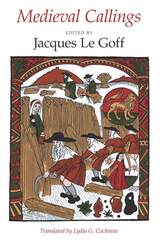 Medieval Callings
Edited by Jacques Le Goff
University of Chicago Press, 1990 These essays by eleven internationally renowned historians present nuanced profiles of the major social and professional groups—the callings-of the Middle Ages.
The contributors focus on attitudes of medieval men and women toward their own society. Through a variety of techniques, from a reading of the Song of Roland to a reading of administrative records, they identify characteristic viewpoints of members of the fighting class, the clergy, and the peasantry. Along with vivid descriptions of what life was like for warrior knights, monks, high churchmen, criminals, lepers, shepherds, and prostitutes, this innovative approach offers a valuable new perspective on the complex social dynamics of feudal Europe.
"Very useful discussions of texts, both learned and literary."—Christopher Dyer, Times Literary Supplement
Contributors: Mariateresa Fumagalli Beonio Brocchieri, Franco Cardini, Enrico Castelnuovo, Giovanni Cherubini, Bronislaw Geremek, Aron Ja. Gurevich, Christiane Klapisch-Zuber, Jacques Le Goff, Giovanni Miccoli, Jacques Rossiaud, and André Vauchez.
Medieval Canon Law
Kriston R. Rennie
Arc Humanities Press, 2018 <div>Canon law is an unavoidable theme for medieval historians. It intersects with every aspect of medieval life and society, and at one point or another, every medievalist works on the law. In this book, Kriston Rennie looks at the early medieval origins and development of canon law though a social history framework, with a view to making sense of a rich and complex legal system and culture, and an equally rich scholarly tradition.</div><div>It was in the early Middle Ages that the ancient traditions, norms, customs, and rationale of the Church were shaped into legislative procedure. The structures and rationale behind the law’s formulation – its fundamental purpose, reason for existence and proliferation, and methods of creation and collection – explain how the medieval Church and society was influenced and controlled. They also, as this short book argues, explain how it ultimately functioned.</div>
The Medieval Castle: Romance and Reality
Kathryn L. Reyerson and Faye Powe, Editors
University of Minnesota Press, 1991 The Medieval Castle was first published in 1991. Minnesota Archive Editions uses digital technology to make long-unavailable books once again accessible, and are published unaltered from the original University of Minnesota Press editions.
Medieval Cityscapes Today
Catherine A. M. Clarke
Arc Humanities Press, 2019 This book explores medieval cityscapes within the modern urban environment, using place as a catalyst to forge connections between past and present, and investigating timely questions concerning theoretical approaches to medieval urban heritage, as well as the presentation and interpretation of that heritage for public audiences. Written by a specialist in literary and cultural history with substantial experience of multi-disciplinary research into medieval towns, <i>Medieval Cityscapes Today</i> teases out stories and strata of meaning from the urban landscape, bringing techniques of close reading to the material fabric of the city, as well as textual artefacts associated with it.
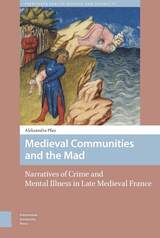 Medieval Communities and the Mad: Narratives of Crime and Mental Illness in Late Medieval France
Aleksandra Pfau
Amsterdam University Press, 2021 The concept of madness as a challenge to communities lies at the core of legal sources. Medieval Communities and the Mad: Narratives of Crime and Mental Illness in Late Medieval France considers how communal networks, ranging from the locale to the realm, responded to people who were considered mad. The madness of individuals played a role in engaging communities with legal mechanisms and proto-national identity constructs, as petitioners sought the king’s mercy as an alternative to local justice. The resulting narratives about the mentally ill in late medieval France constructed madness as an inability to live according to communal rules. Although such texts defined madness through acts that threatened social bonds, those ties were reaffirmed through the medium of the remission letter. The composers of the letters presented madness as a communal concern, situating the mad within the household, where care could be provided. Those considered mad were usually not expelled but integrated, often through pilgrimage, surveillance, or chains, into their kin and communal relationships.
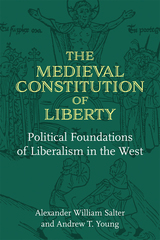 The Medieval Constitution of Liberty: Political Foundations of Liberalism in the West
Alexander William Salter and Andrew T. Young
University of Michigan Press, 2023 Why did enduring traditions of economic and political liberty emerge in Western Europe and not elsewhere? Representative democracy, constitutionalism, and the rule of law are crucial for establishing a just and prosperous society, which we usually treat as the fruits of the Renaissance and Enlightenment, as Western European societies put the Dark Ages behind them. In The Medieval Constitution of Liberty, Salter and Young point instead to the constitutional order that characterized the High Middle Ages. They provide a historical account of how this constitutional order evolved following the fall of the Western Roman Empire. This account runs from the settlements of militarized Germanic elites within the imperial frontiers, to the host of successor kingdoms in the sixth and seventh centuries, and through the short-lived Carolingian empire of the late eighth and ninth centuries and the so-called “feudal anarchy” that followed its demise. Given this unique historical backdrop, Salter and Young consider the resulting structures of political property rights. They argue that the historical reality approximated a constitutional ideal type, which they term polycentric sovereignty. Salter and Young provide a theoretical analysis of polycentric sovereignty, arguing that bargains between political property rights holders within that sort of constitutional order will lead to improvements in governance.
Medieval Cosmology: Theories of Infinity, Place, Time, Void, and the Plurality of Worlds
Pierre Duhem
University of Chicago Press, 1987 These selections from Le système du monde, the classic ten-volume history of the physical sciences written by the great French physicist Pierre Duhem (1861-1916), focus on cosmology, Duhem's greatest interest. By reconsidering the work of such Arab and Christian scholars as Averroes, Avicenna, Gregory of Rimini, Albert of Saxony, Nicole Oresme, Duns Scotus, and William of Occam, Duhem demonstrated the sophistication of medieval science and cosmology.
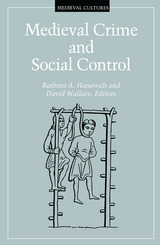 Medieval Crime and Social Control
Barbara A. Hanawalt
University of Minnesota Press, 1998 Uses historical and literary insights to consider crime and punishment in the Middle Ages. Crime is a matter of interpretation, and never was this truer than in the Middle Ages, when societies faced with new ideas and pressures were continually forced to rethink what a crime was-and what was a crime. This collection undertakes a thorough exploration of shifting definitions of crime and changing attitudes toward social control in medieval Europe. These essays-by leading specialists in European history and literature-reveal how various forces in medieval society interacted and competed in interpreting and influencing mechanisms for social control. They also demonstrate how well the different methods of history and literature combine to illuminate these developments.The essays show how the play with boundaries between legitimate and illegitimate actions took place not only in laws and courts, but also in the writing of social commentators such as John Fortescue and Jean Gerson, in the works of authors such as William Langland and Geoffrey Chaucer, and in popular literature such as sagas and romances. Drawing on a wide range of historical and literary sources-legal treatises, court cases, statutes, poems, romances, and comic tales-the contributors consider topics including fear of crime, rape and violence against women, revenge and condemnations of crime, learned dispute about crime and social control, and legal and political struggles over hunting rights. Their work shows how medieval society also defined its boundaries in contested spaces such as taverns and forests and in the different rules applying to the behavior and treatment of men and women.Contributors: Christopher Cannon, Oxford U; Elizabeth Fowler, Yale U; Louise O. Fradenburg, U of California, Santa Barbara; Claude Gauvard, Sorbonne; James H. Landman, U of North Texas; William Perry Marvin, Colorado State U; William Ian Miller, U of Michigan; Louise Mirrer, CUNY; Walter Prevenier, U of Ghent.ISBN 0-8166-3168-9 Cloth $49.95xxISBN 0-8166-3169-7 Paper $19.95x268 pages 5 7/8 x 9 JanuaryMedieval Cultures Series, volume 16Translation inquiries: University of Minnesota Press
 Medieval Crossover: Reading the Secular against the Sacred
Barbara Newman
University of Notre Dame Press, 2013 Medieval Crossover explores a wealth of case studies in French, English, and Latin texts that concentrate on instances of paradox, collision, and convergence. Newman convincingly and with great clarity demonstrates the widespread applicability of the crossover concept as an analytical tool, examining some very disparate works.These include French and English romances about Lancelot and the Grail; the mystical writing of Marguerite Porete (placed in the context of lay spirituality, lyric traditions, and the Romance of the Rose); multiple examples of parody (sexually obscene, shockingly anti-Semitic, or cleverly litigious); and René of Anjou's two allegorical dream visions. Some of these texts are scarcely known to medievalists; others are rarely studied together. Newman's originality in her choice of these primary works will inspire new questions and set in motion new fields of exploration for medievalists working in a large variety of disciplines, including literature, religious studies, history, and cultural studies.
"As Barbara Newman points out, in the wake of the bruising debates about 'Robertsonianism,' scholars preferred to focus on different kinds of questions, but the work produced during the intervening decades can now fruitfully inform a return, with a somewhat different orientation, to the thorny questions of how the sacred and the secular interact in medieval literary texts, and indeed how and to what extent these categories functioned within medieval cultural imagination. Newman's book tackles these questions head-on in a variety of texts, and is sure to stimulate further research in this area." — Sylvia Huot, University of Cambridge
"In Medieval Crossover, Barbara Newman highlights the ways in which the premodern reader understood 'sacred' and 'secular' not as opposing points on a continuum but as what Newman calls a state of 'double judgment,' where transcendent truths could be understood through paradox or hermeneutic inversion. Exquisitely written, grounded in thoughtful readings of some of the most enigmatic texts of the Middle Ages, Medieval Crossover charts a new course in our understanding of premodern modes of interpretation." —Suzanne Conklin Akbari, University of Toronto
"This outstanding piece of scholarship makes an original contribution to the fields of medieval studies in general as well as more specifically to the study of medieval English and French, or better, francophone literature produced either on the continent or in England. Medievalists working in a large variety of disciplines—historical, sociological, religious, as well as cultural and literary—will find this book of great interest. The general argument for both is completely convincing: specialists as well as general readers of medieval works need to learn about and practice double judgment, and Newman's book gives them wonderful examples of how to do so and what is at stake in the process." —Matilda Tomaryn Bruckner, Boston College
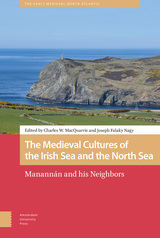 The Medieval Cultures of the Irish Sea and the North Sea: Manannán and his Neighbors
Charles MacQuarrie
Amsterdam University Press, 2019 The literary, historical, and linguistic confluence that characterized the Irish Sea region in the pre-modern period is reflected in the interdisciplinarity of these new research essays, centered on the literatures, languages, and histories of the Irish-Sea communities of the Middle Ages, much of which is still evoked in contemporary culture. The contributors to this collection dive deep into the rich historical record, heroic literature, and story lore of the medieval communities ringing the Irish Sea, with case studies that encompass Manx, Irish, Scandinavian, Welsh, and English traditions. Manannán, the famous travelling Celtic divinity who supposedly claimed the Isle of Man as his home, mingles here with his mythical, legendary, and historical neighbors, whose impact on our image and understanding of the pre-modern cultures of the Northern Atlantic has persisted down through the centuries.
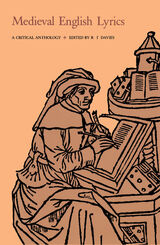 Medieval English Lyrics: A Critical Anthology
R.T. Davies
Northwestern University Press, 1963 The songs, carols, and poems of medieval England evoke a people whose principal literary preoccupations were their passions, religious and otherwise. This comprehensive collection presents 187 poems, earthy and ethereal, from this tradition.
All too often, this great body of poetry is represented in anthologies by a scattering of all-too-well-known poems, or by one or two unfamiliar ones for which there are often inadequate linguistic and critical notes. R.T. Davis, Lecturer in English Literature at the University of Liverpool, has incorporated extensive linguistic and critical notes on the lyrics in this collection, and even the student without experience with Middle English will be able to read and appreciate the works. In addition to being the first critical anthology of medieval English lyrics ever published, it is a revealing portrait of a people far removed from us in time, but very much like ourselves.
Medieval France at War: A Military History of the French Monarchy, 885–1305
John France
Arc Humanities Press, 2022 This book provides an overarching, comprehensive analysis of the French military in the medieval period. The focus is on the armies of the French monarchy and the lands close around them, extending from the Low Countries to Provence. Central themes include recruitment and payment; military organisation; leadership, strategy, and tactics; weapons and arms; chivalry, military culture, and the rise of military professionalism.
 Medieval History in the Modern Classroom: Using Project-Based Learning to Engage Today’s Learners
Lane J. Sobehrad
Arc Humanities Press, 2022
Teaching medieval history should engage students in the real work of professional medievalists. However, many undergraduate courses rely on instructional strategies that only engage students in rote retention of medieval "stuff" and unsupported writing assignments. With trends in the USA and elsewhere showing declining undergraduate enrollment in the humanities and an increasing number of questions from university administrators regarding the utility of the liberal arts, historians need to reassess how they teach. Project-based learning (PBL) is one approach that may help medieval history instructors offer coursework that is more engaging for today's undergraduate students and provide administrators a clearer picture of the utility of studying the past. The pedagogy of PBL actively engages students in projects reflective of the real work being done by medievalists, allowing instructors to move beyond the traditional narrative found in many undergraduate survey courses. This book provides an overview of PBL theory, methods for incorporating PBL into an undergraduate medieval history course, instructional strategies, scalable assessment formats, and other resources useful for any history classroom.
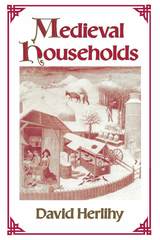 Medieval Households
David Herlihy
Harvard University Press, 1985 How should the medieval family be characterized? Who formed the household and what were the ties of kinship, law, and affection that bound the members together? David Herlihy explores these questions from ancient Greece to the households of fifteenth-century Tuscany, to provide a broad new interpretation of family life. In a series of bold hypotheses, he presents his ideas about the emergence of a distinctive medieval household and its transformation over a thousand years.
Ancient societies lacked the concept of the family as a moral unit and displayed an extraordinary variety of living arrangements, from the huge palaces of the rich to the hovels of the slaves. Not until the seventh and eighth centuries did families take on a more standard form as a result of the congruence of material circumstances, ideological pressures, and the force of cultural norms. By the eleventh century, families had acquired a characteristic kinship organization first visible among elites and then spreading to other classes. From an indifferent network of descent through either male or female lines evolved the new concept of patrilineage, or descent and inheritance through the male line. For the first time a clear set of emotional ties linked family members.
It is the author’s singular contribution to show how, as they evolved from their heritages of either barbarian society or classical antiquity, medieval households developed commensurable forms, distinctive ties of kindred, and a tighter moral and emotional unity to produce the family as we know it. Herlihy’s range of sources is prodigious: ancient Roman and Greek authors, Aquinas, Augustine, archives of monasteries, sermons of saints, civil and canon law, inquisitorial records, civil registers, charters, censuses and surveys, wills, marriage certificates, birth records, and more. This well-written book will be the starting point for all future studies of medieval domestic life.
 The Medieval Icelandic Saga and Oral Tradition: A Discourse on Method
Gísli Sigurðsson
Harvard University Press, 2004 This work explores the role of orality in shaping and evaluating medieval Icelandic literature. Applying field studies of oral cultures in modern times to this distinguished medieval literature, Gísli Sigurðsson asks how it would alter our reading of medieval Icelandic sagas if it were assumed they had grown out of a tradition of oral storytelling, similar to that observed in living cultures.
Sigurðsson examines how orally trained lawspeakers regarded the emergent written culture, especially in light of the fact that the writing down of the law in the early twelfth century undermined their social status. Part II considers characters, genealogies, and events common to several sagas from the east of Iceland between which a written link cannot be established. Part III explores the immanent or mental map provided to the listening audience of the location of Vinland by the sagas about the Vinland voyages. Finally, this volume focuses on how accepted foundations for research on medieval texts are affected if an underlying oral tradition (of the kind we know from the modern field work) is assumed as part of their cultural background. This point is emphasized through the examination of parallel passages from two sagas and from mythological overlays in an otherwise secular text.
 Medieval Identity Machines
Jeffrey J. Cohen
University of Minnesota Press, 2003 A provocative new approach to medieval culture
In Medieval Identity Machines, Jeffrey J. Cohen examines the messiness, permeability, and perversity of medieval bodies, arguing that human identity always exceeds the limits of the flesh. Combining critical theory with a rigorous reading of medieval texts, Cohen asks if the category “human” isn’t too small to contain the multiplicity of identities. As such, this book is the first to argue for a “posthuman” Middle Ages and to make extensive use of the philosophical writings of Gilles Deleuze to rethink the medieval.
Among the topics that Cohen covers are the passionate bond between men and horses in chivalric training; the interrelation of demons, celibacy, and colonialism in an Anglo-Saxon saint’s life; Lancelot’s masochism as envisioned by Chrétien de Troyes; the voice of thunder echoing from Margery Kempe; and the fantasies that sustained some dominant conceptions of race. This tour of identity—in all its fragility and diffusion—illustrates the centrality of the Middle Ages to theory as it enhances our understanding of self, embodiment, and temporality in the medieval world.
Medieval Imagery in Today's Politics
Daniel Wollenberg
Arc Humanities Press, 2018 The election of fringe political parties on the far and extreme right across Europe since spring 2014 has brought the political discourse of "old Europe" and "tradition" to the foreground. Writers and politicians on the right have called for the reclamation, rediscovery, and return of the spirit of national identities rooted in the medieval past. Though the "medieval" is often deployed as a stigmatic symbol of all that is retrograde, against modernity, and barbaric, the medieval is increasingly being sought as a bedrock of tradition, heritage, and identity. Both characterizations – the medieval as violent other and the medieval as vital foundation – are mined and studied in this book. It examines contemporary political uses of the Middle Ages to ask why the medieval continues to play such a prominent role in the political and historical imagination today.
The Medieval Imagination
Jacques Le Goff
University of Chicago Press, 1988 To write this history of the imagination, Le Goff has recreated the mental structures of medieval men and women by analyzing the images of man as microcosm and the Church as mystical body; the symbols of power such as flags and oriflammes; and the contradictory world of dreams, marvels, devils, and wild forests.
"Le Goff is one of the most distinguished of the French medieval historians of his generation . . . he has exercised immense influence."—Maurice Keen, New York Review of Books
"The whole book turns on a fascinating blend of the brutally materialistic and the generously imaginative."—Tom Shippey, London Review of Books
"The richness, imaginativeness and sheer learning of Le Goff's work . . . demand to be experienced."—M. T. Clanchy, Times Literary Supplement
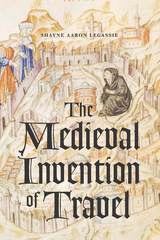 The Medieval Invention of Travel
Shayne Aaron Legassie
University of Chicago Press, 2017 Over the course of the Middle Ages, the economies of Europe, Asia, and northern Africa became more closely integrated, fostering the international and intercontinental journeys of merchants, pilgrims, diplomats, missionaries, and adventurers. During a time in history when travel was often difficult, expensive, and fraught with danger, these wayfarers composed accounts of their experiences in unprecedented numbers and transformed traditional conceptions of human mobility.
Exploring this phenomenon, The Medieval Invention of Travel draws on an impressive array of sources to develop original readings of canonical figures such as Marco Polo, John Mandeville, and Petrarch, as well as a host of lesser-known travel writers. As Shayne Aaron Legassie demonstrates, the Middle Ages inherited a Greco-Roman model of heroic travel, which viewed the ideal journey as a triumph over temptation and bodily travail. Medieval travel writers revolutionized this ancient paradigm by incorporating practices of reading and writing into the ascetic regime of the heroic voyager, fashioning a bold new conception of travel that would endure into modern times. Engaging methods and insights from a range of disciplines, The Medieval Invention of Travel offers a comprehensive account of how medieval travel writers and their audiences reshaped the intellectual and material culture of Europe for centuries to come.
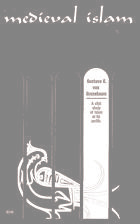 Medieval Islam: A Study in Cultural Orientation
Gustave E. von Grunebaum
University of Chicago Press, 1946 From the Preface: "This book book has grown out of a series of public lectures delivered in the spring of 1945 in the Division of the Humanities of the University of Chicago. It proposes to outline the cultural orientation of the Muslim Middle Ages, with eastern Islam as the center of attention. It attempts to characterize the medieval Muslim's view of himself and his peculiarly defined universe, the fundamental intellectual and emotional attitudes that governed his works, and the mood in which he lived his life. It strives to explain the structure of his universe in terms of inherited, borrowed, and original elements, the institutional framework within which it functioned, and its place in relation to the contemporary Christian world. "A consideration of the various fields of cultural activity requires an analysis of the dominant interest, the intentions, and, to some extent, the methods of reasoning with which the Muslim approached his special subjects and to which achievement and limitations of achievement are due. Achievements referred to or personalities discussed will never be introduced for their own sake, let alone for the sake of listing the sum total of this civilization's major contributions. They are dealt with rather to evidence the peculiar ways in which the Muslim essayed to understand and to organize his world. "The plan of the book thus rules out the narration of political history beyond the barest skeleton, but it requires the ascertaining of the exact position of Islam in the medieval world and its significance. This plan also excludes a study of Muslim economy, but it leads to an interpretation of the social structure as molded by the prime loyalties cherished by the Muslim."
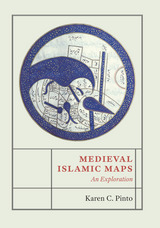 Medieval Islamic Maps: An Exploration
Karen C. Pinto
University of Chicago Press, 2016 Hundreds of exceptional cartographic images are scattered throughout medieval and early modern Arabic, Persian, and Turkish manuscript collections. The plethora of copies created around the Islamic world over the course of eight centuries testifies to the enduring importance of these medieval visions for the Muslim cartographic imagination. With Medieval Islamic Maps, historian Karen C. Pinto brings us the first in-depth exploration of medieval Islamic cartography from the mid-tenth to the nineteenth century.
Pinto focuses on the distinct tradition of maps known collectively as the Book of Roads and Kingdoms (Kitab al-Masalik wa al-Mamalik, or KMMS), examining them from three distinct angles—iconography, context, and patronage. She untangles the history of the KMMS maps, traces their inception and evolution, and analyzes them to reveal the identities of their creators, painters, and patrons, as well as the vivid realities of the social and physical world they depicted. In doing so, Pinto develops innovative techniques for approaching the visual record of Islamic history, explores how medieval Muslims perceived themselves and their world, and brings Middle Eastern maps into the forefront of the study of the history of cartography.
 Medieval Islamic Medicine
Peter E. Pormann and Emilie Savage-Smith
Georgetown University Press, 2007 The medical tradition that developed in the lands of Islam during the medieval period (c. 650-1500) has, like few others, influenced the fates and fortunes of countless human beings. It is a story of contact and cultural exchange across countries and creeds, affecting many people from kings to the common crowd. This tradition formed the roots from which modern Western medicine arose. Contrary to the stereotypical picture, medieval Islamic medicine was not simply a conduit for Greek ideas, but a venue for innovation and change. Medieval Islamic Medicine is organized around five topics: the emergence of medieval Islamic medicine and its intense crosspollination with other cultures; the theoretical medical framework; the function of physicians within the larger society; medical care as seen through preserved case histories; and the role of magic and devout religious invocations in scholarly as well as everyday medicine. A concluding chapter on the "afterlife" concerns the impact of this tradition on modern European medical practices, and its continued practice today. The book includes an index of persons and their books; a timeline of developments in East and West; and a section on further reading.
 The Medieval Islamic Republic of Letters: Arabic Knowledge Construction
Muhsin J. al-Musawi
University of Notre Dame Press, 2015 In The Medieval Islamic Republic of Letters: Arabic Knowledge Construction, Muhsin J. al-Musawi offers a groundbreaking study of literary heritage in the medieval and premodern Islamic period. Al-Musawi challenges the paradigm that considers the period from the fall of Baghdad in 1258 to the collapse of the Ottoman Empire in 1919 as an "Age of Decay" followed by an "Awakening" (al-nahdah). His sweeping synthesis debunks this view by carefully documenting a "republic of letters" in the Islamic Near East and South Asia that was vibrant and dynamic, one varying considerably from the generally accepted image of a centuries-long period of intellectual and literary stagnation.
Al-Musawi argues that the massive cultural production of the period was not a random enterprise: instead, it arose due to an emerging and growing body of readers across Islamic lands who needed compendiums, lexicons, and commentaries to engage with scholars and writers. Scholars, too, developed their own networks to respond to each other and to their readers. Rather than addressing only the elite, this culture industry supported a common readership that enlarged the creative space and audience for prose and poetry in standard and colloquial Arabic. Works by craftsmen, artisans, and women appeared side by side with those by distinguished scholars and poets.
Through careful exploration of these networks, The Medieval Islamic Republic of Letters makes use of relevant theoretical frameworks to situate this culture in the ongoing discussion of non-Islamic and European efforts. Thorough, theoretically rigorous, and nuanced, al-Musawi's book is an original contribution to a range of fields in Arabic and Islamic cultural history of the twelfth to eighteenth centuries.
"Muhsin al-Musawi's work systematizes a huge body of primary literary texts and current scholarship under a compelling and original thesis. The Medieval Islamic Republic of Letters will be the starting point for a new generation of scholarship on this six-hundred-year 'republic of letters' that stretched from India to North Africa." —Suzanne P. Stetkevych, Sultan Qaboos bin Said Professor of Arabic and Islamic Studies, Georgetown University
Medieval Islamic Sectarianism
Christine D. Baker
Arc Humanities Press, 2019 <div>This book asks readers to re-examine their view of the Islamic world and the development of sectarianism in the Middle East by shining a light on the complexity and diversity of early Islamic society. While Sunni Islam eventually became politically and numerically dominant, Sunni and Shiʿi identities took centuries to develop as independent communities. When modern discussions of sectarianism in the Middle East reduce these identities to a 1400-year war between Sunnis and Shiʿis, we create a false narrative.</div>
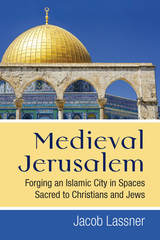 Medieval Jerusalem: Forging an Islamic City in Spaces Sacred to Christians and Jews
Jacob Lassner
University of Michigan Press, 2017 Medieval Jerusalem examines an old question that has recently surfaced and given rise to spirited discussion among Islamic historians and archeologists: what role did a city revered for its holiness play in the unfolding politics of the early Islamic period? Was there an historic moment when the city, holy to Jews, Christians, and Muslims, may have been considered as the administrative center of a vast Islamic world, as some scholars on early Islam have recently claimed? Medieval Jerusalem also emphasizes the city’s evolution as a revered Islamic religious site comparable to the holy cities Mecca and Medina.
Examining Muslim historiography and religious lore in light of Jewish traditions about the city, Jacob Lassner points out how these reworked Jewish traditions and the imposing monumental Islamic architecture of the city were meant to demonstrate that Islam had superseded Judaism and Christianity as the religion for all monotheists. He interrogates the literary sources of medieval Islamic historiography and their modern interpreters as if they were witnesses in a court of law, and applies the same method for the arguments about the monuments of the city’s material culture, including the great archaeological discoveries along the south wall of the ancient Temple Mount.
This book will be of interest to a broad range of readers given the significance of the city in the current politics of the Near East. It will in part serve as a corrective to narratives of Jerusalem’s past that are currently popular for scholarly and political reasons.
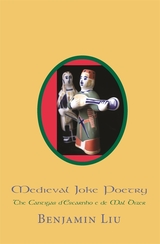 Medieval Joke Poetry: The Cantigas d’Escarnho e de Mal Dizer
Benjamin Liu
Harvard University Press, 2004 Medieval Joke Poetry examines the intersection of jokes, laughter, insults, and poetry in a collection of thirteenth- and fourteenth-century medieval Iberian songs known as the Cantigas d’escarnho e de mal dizer. Written in Galician-Portuguese, these “songs of mockery and insult” make up a heterogeneous corpus whose witticisms are by turns funny and vicious, crudely obscene and exquisitely sophisticated, playful and deadly serious.
Benjamin Liu’s readings disentangle the complex verbal strategies of these joke-poems in order to reveal the latent cultural tensions that underlie their humor. Wordplay, double meanings, and deliberate combinations of incongruous ideas are intended to elicit laughter, even as they gesture toward the rupture of accepted cultural categories in such manifestly hybrid paradoxes as an “Albardan cavaleiro” (noble buffoon), a “mouro cruzado” (Crusader Moor), or a male “dona salvage” (wild woman). Liu shows how these jokes operate in such varied cultural contexts as the arts of augury and divination, pilgrimage, prostitution, interfaith sexuality, and medical malpractice.
 The Medieval Kitchen: Recipes from France and Italy
Odile Redon, Françoise Sabban, and Silvano Serventi
University of Chicago Press, 1998 The Medieval Kitchen is a delightful work in which historians Odile Redon, Françoise Sabban, and Silvano Serventi rescue from dark obscurity the glorious cuisine of the Middle Ages. Medieval gastronomy turns out to have been superb—a wonderful mélange of flavor, aroma, and color. Expertly reconstructed from fourteenth- and fifteenth-century sources and carefully adapted to suit the modern kitchen, these recipes present a veritable feast. The Medieval Kitchen vividly depicts the context and tradition of authentic medieval cookery.
"This book is a delight. It is not often that one has the privilege of working from a text this detailed and easy to use. It is living history, able to be practiced by novice and master alike, practical history which can be carried out in our own homes by those of us living in modern times."—Wanda Oram Miles, The Medieval Review
"The Medieval Kitchen, like other classic cookbooks, makes compulsive reading as well as providing a practical collection of recipes."—Heather O'Donoghue, Times Literary Supplement
Medieval Laments of the Virgin Mary: Text, Music, Performance, and Genre Liminality
Eliška Kubartová Poláčková
Arc Humanities Press, 2023 Laments of the Virgin Mary represent a devotional genre that offered its clerical and lay audiences of the High and Late Middle Ages a deeply inspiring, yet at the same time ambiguous, religious experience. Through the deeply emotional and markedly animated representation of the Passion, seen as if through the eyes of the mother of God, audiences and performers were not only reminded of the redemptive power of the Cross, but encouraged to experience Christ’s sacrifice in a more personal and intimate manner. In the pious practice of imitatio Mariae, believers mirrored the sorrow of the mother through their own bodies in order to develop a kind of visceral empathy towards, and hence a deeper understanding of, the divine.
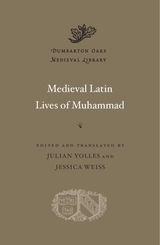 Medieval Latin Lives of Muhammad
Julian Yolles
Harvard University Press, 2018 Throughout the Middle Ages, Christians wrote about Islam and the life of Muhammad. These stories, ranging from the humorous to the vitriolic, both informed and warned audiences about what was regarded as a schismatic form of Christianity. Medieval Latin Lives of Muhammad covers nearly five centuries of Christian writings on the prophet, including accounts from the farthest-flung reaches of medieval Europe, the Iberian Peninsula, and the Byzantine Empire. Over time, authors portrayed Muhammad in many guises, among them: Theophanes’s influential ninth-century chronicle describing the prophet as the heretical leader of a Jewish conspiracy; Embrico of Mainz’s eleventh-century depiction of Muhammad as a former slave who is manipulated by a magician into performing unholy deeds; and Walter of Compiègne’s twelfth-century presentation of the founder of Islam as a likable but tricky serf ambitiously seeking upward social mobility.
The prose, verse, and epistolary texts in Medieval Latin Lives of Muhammad help trace the persistence of old clichés as well as the evolution of new attitudes toward Islam and its prophet in Western culture. This volume brings together a highly varied and fascinating set of Latin narratives and polemics never before translated into English.
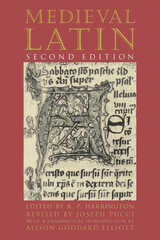 Medieval Latin: Second Edition
Edited by K. P. Harrington
University of Chicago Press, 1997 K. P. Harrington's Mediaeval Latin, the standard medieval Latin anthology used in the United States since its initial publication in 1925, has now been completely revised and updated for today's students and teachers by Joseph Pucci. This new edition of the classic anthology retains its breadth of coverage, but increases its depth by adding fourteen new selections, doubling the coverage of women writers, and expanding a quarter of the original selections. The new edition also includes a substantive grammatical introduction by Alison Goddard Elliott.
To help place the selections within their wider historical, social, and political contexts, Pucci has written extensive introductory essays for each of the new edition's five parts. Headnotes to individual selections have been recast as interpretive essays, and the original bibliographic paragraphs have been expanded. Reprinted from the best modern editions, the selections have been extensively glossed with grammatical notes geared toward students of classical Latin who may be reading medieval Latin for the first time.
Includes thirty-two full-page plates (with accompanying captions) depicting medieval manuscript and book production.
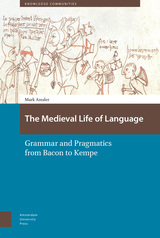 The Medieval Life of Language: Grammar and Pragmatics from Bacon to Kempe
Mark Amsler
Amsterdam University Press, 2021 The Medieval Life of Language: Grammar and Pragmatics from Bacon to Kempe explores the complex history of medieval pragmatic theory and ideas and metapragmatic awareness across social discourses. Pragmatic thinking about language and communication is revealed in grammar, semiotics, philosophy, and literature. Part historical reconstruction, part social history, part language theory, Amsler supplements the usual materials for the history of medieval linguistics and discusses the pragmatic implications of grammatical treatises on the interjection, Bacon’s sign theory, logic texts, Chaucer’s poetry, inquisitors’ accounts of heretic speech, and life-writing by William Thorpe and Margery Kempe. Medieval and contemporary pragmatic theory are contrasted in terms of their philosophical and linguistic orientations. Aspects of medieval pragmatic theory and practice, especially polysemy, equivocation, affective speech, and recontextualization, show how pragmatic discourse informed social controversies and attitudes toward sincere, vague, and heretical speech. Relying on Bakhtinian dialogism, critical discourse analysis, and conversation analysis, Amsler situates a key period in the history of linguistics within broader social and discursive fields of practice.
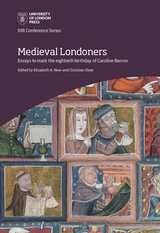 Medieval Londoners: essays to mark the eightieth birthday of Caroline M. Barron
Edited by Christian Steer and Elizabeth New
University of London Press, 2019 Medieval Londoners were a diverse group, some born in the city, and others drawn to the capital from across the realm and from overseas. For some, London became the sole focus of their lives, while others retained or developed networks and loyalties that spread far and wide. The rich evidence for the medieval city, including archaeological and documentary evidence, means that the study of London and its inhabitants remains a vibrant field. Medieval Londoners brings together archaeologists, historians, art-historians and literary scholars whose essays provide glimpses of medieval Londoners in all their variety. This volume is offered to Caroline M. Barron, Emeritus Professor of the History of London at Royal Holloway, University of London, on the occasion of her 80th birthday. Her remarkable career – over some fifty years – has revitalized the way in which we consider London and its people. This volume is a tribute to her scholarship and her friendship and encouragement to others. It is thanks to Caroline M. Barron that the study of medieval London remains as vibrant today as it has ever been.
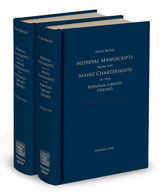 Medieval Manuscripts from the Mainz Charterhouse in the Bodleian Library, Oxford: A Descriptive Catalogue
Daniela Mairhofer
Bodleian Library Publishing, 2017 The Bodleian Library is one of the few libraries outside Germany with a substantial number of medieval manuscripts from the German-speaking lands. These manuscripts, most of which were acquired by Archbishop Laud in the 1630s, during the Thirty Years War, mainly consist of major groups of codices from ecclesiastical houses in the Rhine-Main area, that is Würzburg, Mainz, and Eberbach. Their potential contribution to the religious and intellectual history of these foundations and to the study of German medieval culture as a whole is immeasurable.
These volumes contain descriptions of more than one hundred medieval manuscripts, mostly Latin, from the Charterhouse St. Michael at Mainz. Dating from the tenth to the fifteenth centuries, they reflect the spirituality and literary interest of the Carthusian order. The first major publication on the Mainz Charterhouse manuscript collection, this two-volume edition provides authoritative and superbly detailed descriptions, including information about the physical characteristics, decoration, binding, and provenance of the manuscripts.
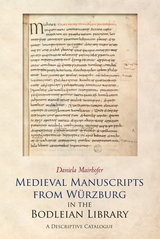 Medieval Manuscripts from Würzburg in the Bodleian Library: A Descriptive Catalogue
Daniela Mairhofer
Bodleian Library Publishing, 2015 The Bodleian Library holds a significant collection of Latin medieval manuscripts from Germany—more specifically from Würzburg, Eberbach, and Mainz. The medieval manuscripts from Würzburg, most of which were acquired by William Laud, Archbishop of Canterbury, during the period of the Thirty Years’ War, constitute an invaluable collection. Most of these codices originally belonged to the cathedral chapter of Würzburg, the Domstift St. Kilian, and date back to the ninth century.
Presenting detailed descriptions of more than fifty of manuscripts, Medieval Manuscripts from Würzburg in the Bodleian Library, Oxford provides an authoritative catalog, including many important early copies of the manuscripts of church fathers during the Carolingian period. Daniela Mairhofer examines each from both a textual and paleographic point of view, paying careful attention to the provenance of the manuscript, as well as to physical characteristics like decoration and binding. Entries are accompanied by copious color plates.
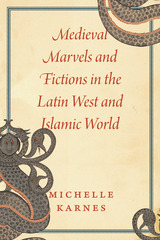 Medieval Marvels and Fictions in the Latin West and Islamic World
Michelle Karnes
University of Chicago Press, 2022 A cross-cultural study of magical phenomena in the Middle Ages.
Marvels like enchanted rings and sorcerers’ stones were topics of fascination in the Middle Ages, not only in romance and travel literature but also in the period’s philosophical writing. Rather than constructions of belief accepted only by simple-minded people, Michelle Karnes shows that these spectacular wonders were near impossibilities that demanded scrutiny and investigation.
This is the first book to analyze a diverse set of writings on such wonders, comparing texts from the Latin West—including those written in English, French, Italian, and Castilian Spanish —with those written in Arabic as it works toward a unifying theory of marvels across different disciplines and cultures. Karnes tells a story about the parallels between Arabic and Latin thought, reminding us that experiences of the strange and the unfamiliar travel across a range of genres, spanning geographical and conceptual space and offering an ideal vantage point from which to understand intercultural exchange. Karnes traverses this diverse archive, showing how imagination imbues marvels with their character and power, making them at once enigmatic, creative, and resonant. Skirting the distinction between the real and unreal, these marvels challenge readers to discover the highest capabilities of both nature and the human intellect. Karnes offers a rare comparative perspective and a new methodology to study a topic long recognized as central to medieval culture.
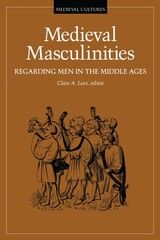 Medieval Masculinities: Regarding Men in the Middle Ages
Clare A. Lees
University of Minnesota Press, 1994 "Ranging from questions of epic violence and heroic embodiments of manhood to constructions of bachelorhood, husbandry, and sainthood, Medieval Masculinities is the first synthesis of medieval and gender studies to focus on masculinities." Harry Brod, editor of The Making of Masculinities"We should not be working [exclusively] on the subjected sex any more than a historian of class can focus exclusively on peasants."-Natalie Zemon Davis, 1975 In the years since Natalie Davis made this remark, men's studies, and gender studies along with it, has earned its place in scholarship. What is often missing from such studies, however, is the insight that the concept of gender in general, and that of masculinity in particular, can be understood only in relation to individual societies, examined at specific historical and cultural moments. A brilliant application of this insight, Medieval Masculinities is the first full-length collection to explore the issues of men's studies and contemporary theories of gender within the context of the Middle Ages. Interdisciplinary and multicultural, the essays range from matrimony in medieval Italy to bachelorhood in Renaissance Venice, from friars and saints to the male animal in the fables of Marie de France, from manhood in Sir Gawain and the Green Knight, Beowulf, and the Roman d'Eneas to men as "other," whether Muslim or Jew, in medieval Castilian epic and ballad. The authors are especially concerned with cultural manifestations of masculinity that transcend this particular historical period-idealized gender roles, political and economic factors in structuring social institutions, and the impact of masculinist ideology in fostering and maintaining power. Together, their essays constitute an important reassessment of traditional assumptions within medieval studies as well as a major contribution to the evolving study of gender.ContributorsChristopher Baswell, Barnard CollegeVern L. Bullough, SUNY, BuffaloStanley Chojnacki, Michigan State UniversityJohn Coakley, New Brunswick Theological SeminaryThelma Fenster, Fordham UniversityClare Kinney, University of VirginiaClare A. Lees, University of PennsylvaniaJo Ann McNamara, Hunter CollegeLouise Mirrer, Fordham UniversityHarriet Spiegel, California State University, ChicoSusan Mosher Stuard, Haverford College
 The Medieval Mediterranean: Cross-Cultural Contacts
Marilyn J. Chiat and Kathryn L. Reyerson, Editors
University of Minnesota Press, 1991 The Medieval Mediterranean was first published in 1991. Minnesota Archive Editions uses digital technology to make long-unavailable books once again accessible, and are published unaltered from the original University of Minnesota Press editions. "Three faiths—Jewish, Christian, and Muslim—became the dominant religions of western civilization in the course of the Middle Ages. Within each, there is and was great cultural and ethnic diversity. The complex relationships today among Jews, Christians, and Muslims in the Mediterranean, the tensions and attempts at resolution of conflicts among these groups, have their roots in the Middle Ages." Contributors: Oleg Grabar, The Meaning of the Dome of the Rock; Oliver Nicholson, Golden Age and the End of the World: Myths of Mediterranean Life from Lactantius to Joshua the Stylite; Ivan Havener, OSB, Two Early Anecdotes Concerning Gregory the Great from the Greek Tradition; Catherine B. Asher, The Public Baths of Medieval Spain: An Architectural Study; Jonathan M. Bloom, The Revival of Early Islamic Architecture by the Umayyads of Spain; Marvin Mills, Scenario for a Roman Provenance for the Mosque of Cordoba; Sybil H. Mintz, The Carpet Pages of the Spanish-Hebrew Farhi Bible; Ann Thorson Walton, The Three Hebrew Children in the Fiery Furnace: A Study of Christian Iconography; W. Eugene Kleinbauer, Pre-Carolingian Concepts of Architectural Planning; Clara Estow, Iberia and North Africa: A Comparative View of Religious and Sexual Discrimination in a Medieval Plural Society; Moshe Sokolow, Arabic Books in Jewish Libraries: The Evidence of Genizah Booklist; Leslie S. B. MacCoull, Coptic Alchemy and Craft Technology in Islamic Egypt: The Papyrological Evidence; Thomas S. Noonan, Technology Transfer Between Byzantium and Eastern Europe: A Case Study of the Glass Industry in Early Russia; Stephanie Cain Van D'Elden, Black and White: Contact with the Mediterranean World in Medieval German Narrative; Gerhard Weiss, The Pilgrim as Tourist: Travels to the Holy Land as Reflected in the Published Accounts of German Pilgrims Between 1450 and 1550
Medieval Merchants and Money: Essays in Honour of James L. Bolton
Edited by Matthew Davies
University of London Press, 2016 This volume contains selected essays in celebration of the scholarship of the medieval historian Professor James L. Bolton. The essays address a number of different questions in medieval economic and social history, as the volume looks at the activities of merchants, their trade, legal interactions and identities, and on the importance of money and credit in the rural and urban economies. Other essays look more widely at patterns of immigration to London, trade and royal policy, and the role that merchants played in the Hundred Years War.
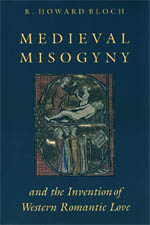 Medieval Misogyny and the Invention of Western Romantic Love
R. Howard Bloch
University of Chicago Press, 1991 Until now the advent of Western romantic love has been seen as a liberation from—or antidote to—ten centuries of misogyny. In this major contribution to gender studies, R. Howard Bloch demonstrates how similar the ubiquitous antifeminism of medieval times and the romantic idealization of woman actually are.
Through analyses of a broad range of patristic and medieval texts, Bloch explores the Christian construction of gender in which the flesh is feminized, the feminine is aestheticized, and aesthetics are condemned in theological terms. Tracing the underlying theme of virginity from the Church Fathers to the courtly poets, Bloch establishes the continuity between early Christian antifeminism and the idealization of woman that emerged in the twelfth and thirteenth centuries. In conclusion he explains the likely social, economic, and legal causes for the seeming inversion of the terms of misogyny into those of an idealizing tradition of love that exists alongside its earlier avatar until the current era.
This startling study will be of great value to students of medieval literature as well as to historians of culture and gender.
The Medieval Monastery
Andrew MacLeish, Editor
University of Minnesota Press, 1991
The Medieval Monastery was first published in 1991. Minnesota Archive Editions uses digital technology to make long-unavailable books once again accessible, and are published unaltered from the original University of Minnesota Press editions.
|
|
